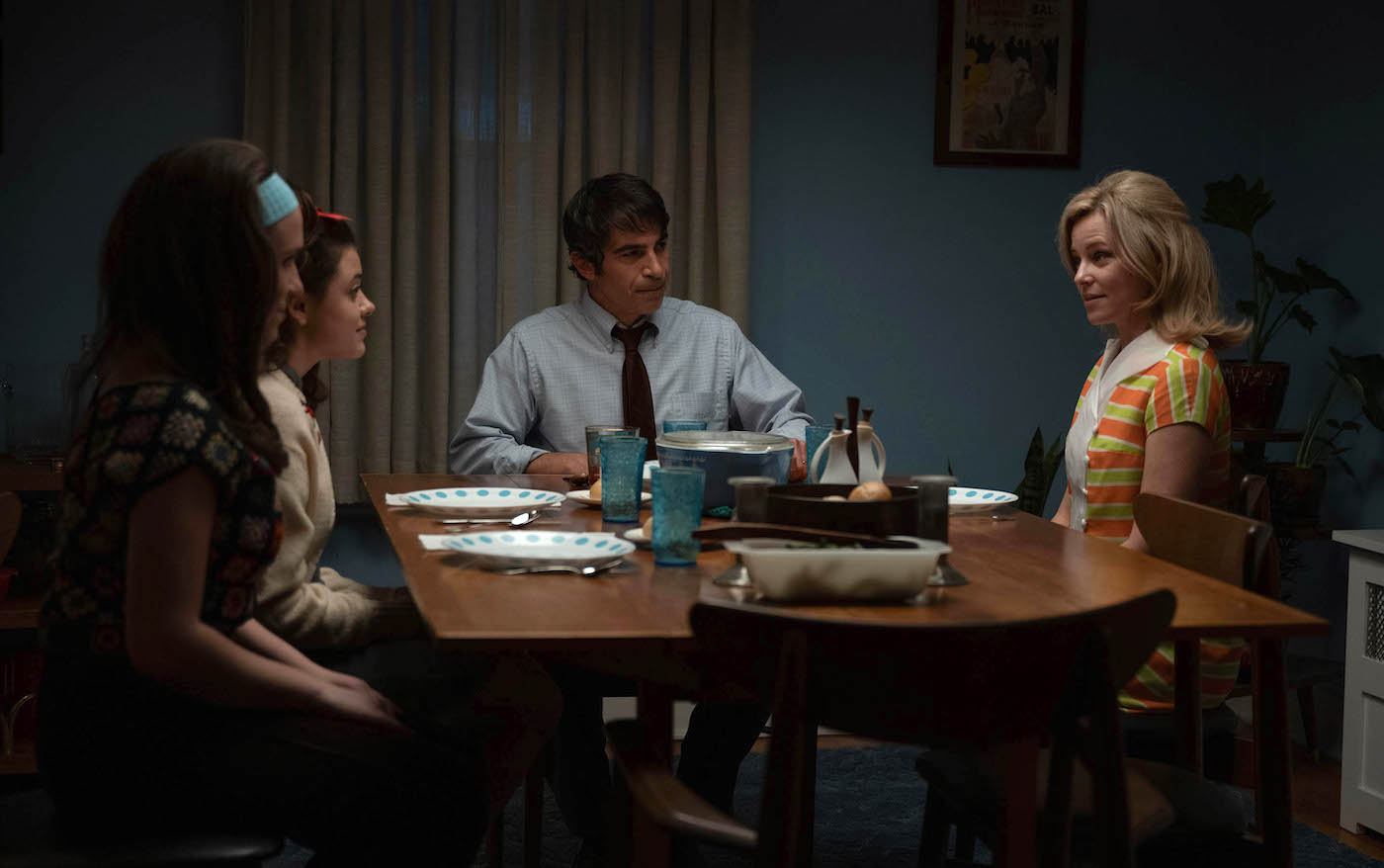Sundance 2022 heads back online as Local 600 filmmakers navigate another year of virtual premieres.
by David Geffner / Photos Courtesy of Sundance Institute Unless Otherwise Noted
Last year in this space I wrote about a “virtually compelling” version of the Sundance Film Festival [icgmagazine.com, January 2020], where organizers skillfully managed to pivot from 20-plus years of in-person gatherings to a robust and surprisingly intimate online experience. The 2022 version of Sundance was in the works for almost a year as a hybrid event – part in-person, part online. But when the Omicron variant created rising COVID infection rates all over the U.S. (including a small ski town about 40 miles southeast of downtown Salt Lake City), festival organizers made the only logical – and safe – choice and returned to an all-online format with less than three weeks until opening night. How this last-minute pivot will impact Local 600 members premiering work in Park City this year remains to be seen, other than the obvious disappointment of not having one’s work screened before a live audience (and/or gathering with one’s crewmates and peers).
And yet despite a pandemic that has shape-shifted film festivals around the world, superb, even life-changing work continues to pour forth from Sundance – a big chunk of which (as always) was shot or crewed by Guild camera teams. Any themes manifesting in the choices made by 2022 Sundance programmers mostly point to one of the strongest years ever for female filmmakers – not just in terms of storylines and lead characters, but also for Local 600 directors of photography. Sundance 2022 includes the work of no fewer than eight female Guild DP’s, two of whom – Cristina Dunlap and Greta Zozula – have two films each in the festival. Dunlap’s Cha Cha Real Smooth, in the U.S. Dramatic Competition, was shot in Pittsburgh, PA and enjoyed a lengthy preproduction period via Zoom, while her Premieres Section Am I OK?, co-directed by Stephanie Allynne and Tig Notaro, allowed Dunlap to shoot many locations in her home city of L.A. that would have been difficult (aka crowded) to access in a non-COVID landscape. Zozula, whose Premieres Section film Call Jane was shot in Chicago, enjoyed the rare privilege of capturing entirely on 16-mm film (to accurately visualize the late 1960s storyline about an underground collective of women working to provide safe and healthy abortions). Zozula’s second feature, Summering, screens in the Kids Section, and the storyline – about a group of girls the summer before entering middle school – gave her the chance to use Cooke Xtal Express lenses that, as she describes, “warp and bend spaces in very unnatural ways, with beautiful flaring that helped us mix magical realism as well as horror and surrealism.”
Other highlights at Sundance 2022 include festival veterans like Alex Disenhof, ASC, showcasing the U.S. Dramatic Competition feature, Alice. Written and directed by Krystin Ver Linden, the intriguing premise centers around a woman in servitude in 1800s Georgia, who, after escaping the 55-acre confines of her captor, discovers the shocking reality that exists beyond the treeline – the year 1973. Another Sundance alumnus, Eric Lin, brings the beautifully shot U.S. Dramatic Competition feature Blood to the festival. Shooting on location in Japan for director Bradley Rust Gray, Lin used long lensing – anywhere from 85 to 300 mm – to create a feeling of “eavesdropping” on the mostly non-professional cast. One of the most gratifying debuts in this year’s festival belongs to longtime Panavision-tech-turned-Guild Director of Photography Michael Dallatorre, who was featured in the Oscar-nominated documentary Colors Straight Up. That film followed Dallatorre, a Jordan High graduate, and his participation in the South-Central L.A. performing arts group Colors United, which ultimately led to his becoming a filmmaker.
(Note: this article was compiled with information supplied by Local 600 members before the start of the festival. We are not responsible for the omission of films and crewmember names not provided to www.icgmagazine.com by posting date.)
U.S. Dramatic Competition
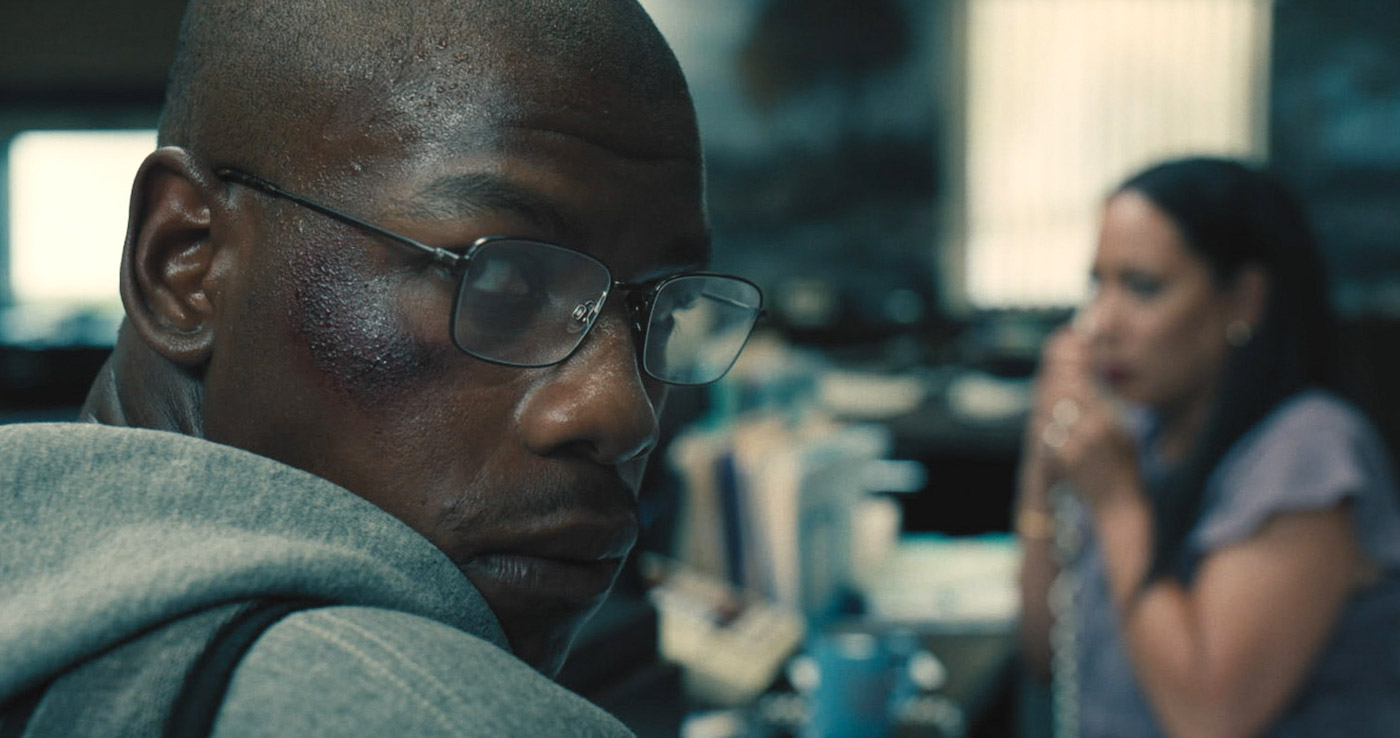
892 – From Writer/Director Abi Damaris Corbin and frequent Sundance filmmaker Doug Emmett [ICG Magazine.com January 2018] comes this drama about a U.S. Marine vet (John Boyega) who finds himself on the brink of homelessness after his disability check fails to materialize from Veterans Affairs. With no other options, he walks into a Wells Fargo Bank and says, “I’ve got a bomb.” Shot with a full union crew in California that included Emmett; A-Camera 1st AC Buddy Allen Thomas; Steadicam Operators Nate Anderson, Joel Marsh, and Ben Verhulst; AC’s Emily Hock and Jinuk Lee; DIT Michael Borenstein and Loader Alexander Macat. Along with Boyega, the cast includes Michael Kenneth Williams, Connie Britton, and Olivia Washington. Emmet paired Zeiss Supreme lenses with the Sony VENICE and worked with Company 3 Colorist Natasha Leonnet on the final grade.
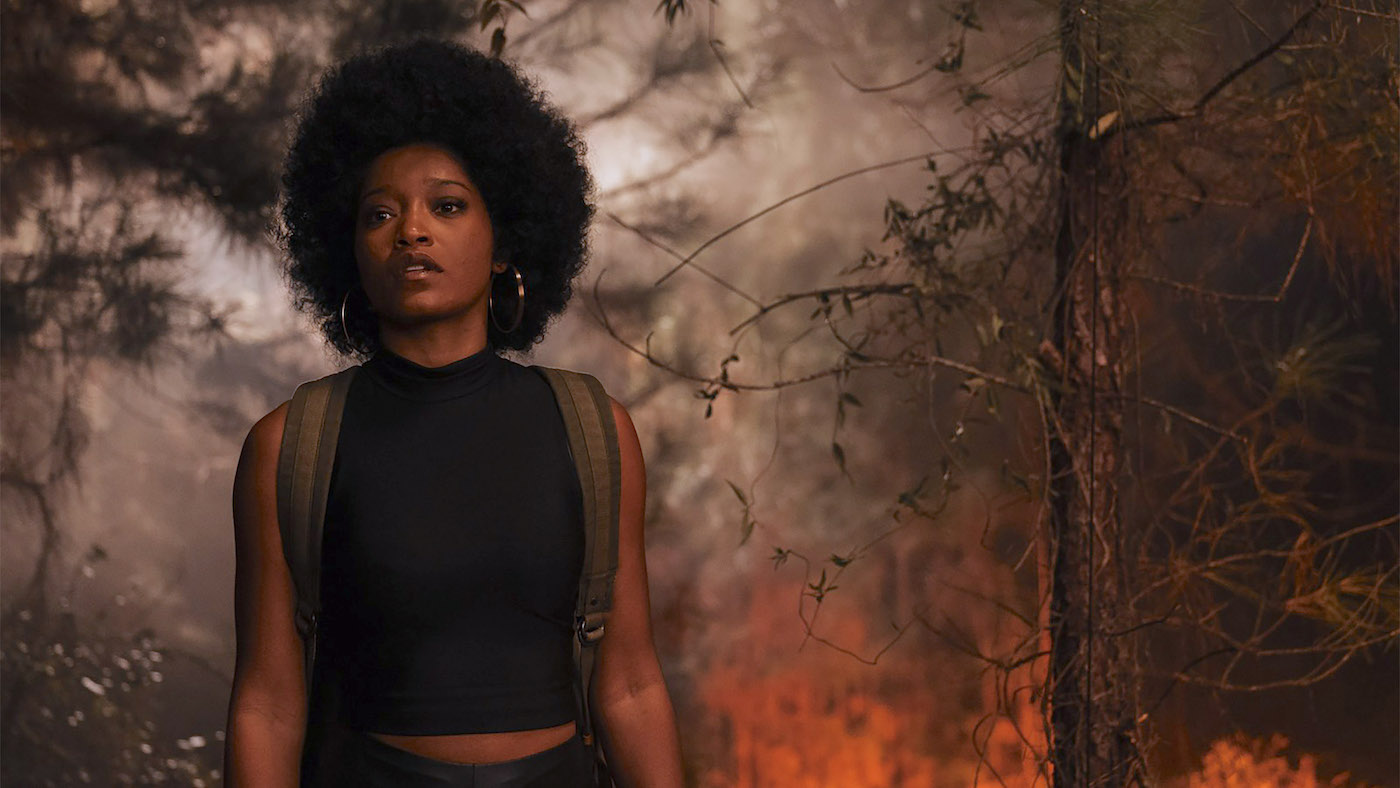
Alice – Director/Writer Krystin Ver Linden brings to the screen this tale of a woman in servitude in 1800s Georgia, who, after escaping the 55-acre confines of her captor, discovers the shocking reality that exists beyond the treeline – the year 1973. This imaginative indie feature (inspired by true events) was shot by Sundance alumnus Alex Disenhof, ASC, with a full Guild crew that included A-Camera Operator Dave Hirschmann, A-Camera 1st AC Warren Brace, A-Camera 2nd AC Christy Fiers, B-Camera Operator Jordan Boston Jones, B-Camera 1st AC Laura Robinson, B-Camera 2nd AC Brian Phan, DIT Andrea Acs, and Digital Utility Brody Docar. The film was shot in Savannah, GA during the pandemic, which, Disenhof says, proved a “challenging but rewarding” adventure. “We were led by Krystin, who has an encyclopedic knowledge of film and who had a singular vision for her debut feature, which was fantastic. Our camera crew was first-rate as well, combining artistry, skill, and good spirits as we dealt with COVID. A special shoutout must be given to 1st AC Warren Brace, who was the glue who held the crew together through various COVID-related starts and stops to production.”
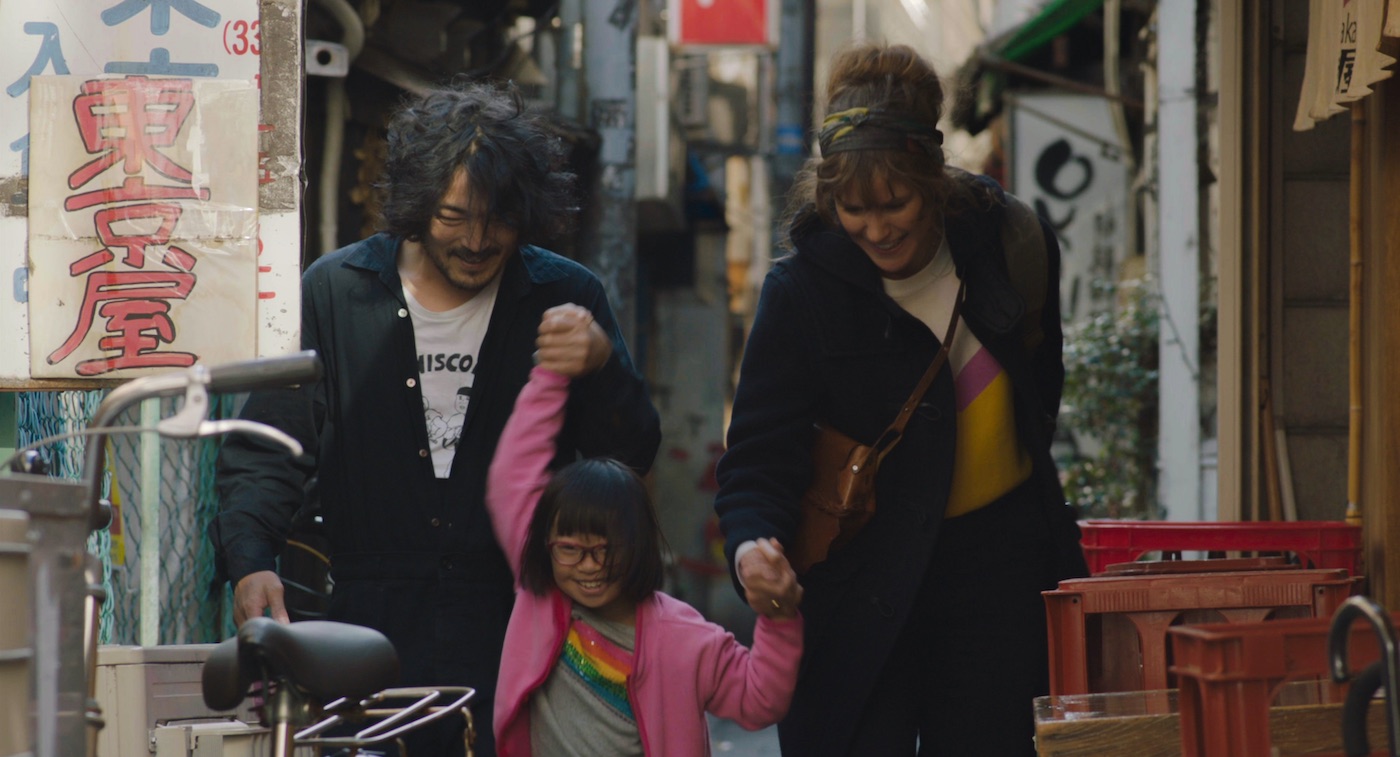
Blood – Sundance alumnus Eric Lin shot this elegant feature for Bradley Rust Gray, who he first worked with on The Exploding Girl. In a continuation of a formal, calm approach to shooting the unexpected the pair began on Exploding Girl, Lin adds that “Brad loved letting the actors (and often non-professional actors) find their way through a situation with only an outline of what the scene was. We tried to achieve a feeling of eavesdropping on the characters, so often we would be on long lenses – anywhere from an 85 to a 300 mm – far from the actors.” Lin says he and Rust Gray would gather at the camera, “whispering to each other about when to pan over to this character or to that detail. We tried to discover the inner world of Chloe within the scene in an observational way. Both Brad and I have been to Tokyo a few times and we looked for locations where the vibrancy of the city didn’t overwhelm the intimacy we wanted.” Knowing how precious space is in Tokyo and driven by a desire to catch the incredible available light there, Lin says the ALEXA Mini was the perfect tool for its modular form factor and color rendition. “Zeiss Super Speeds and Standard Speeds lent a softness to the image that helped define the shifting in Chloe’s emotional landscape,” Lin concludes. “We had an incredible Japanese crew who adapted to our style of working. I was not available for the additional scenes shot in Iceland, and [Local 600] DP Guy Godfree captured some truly stunning moments for the film.”
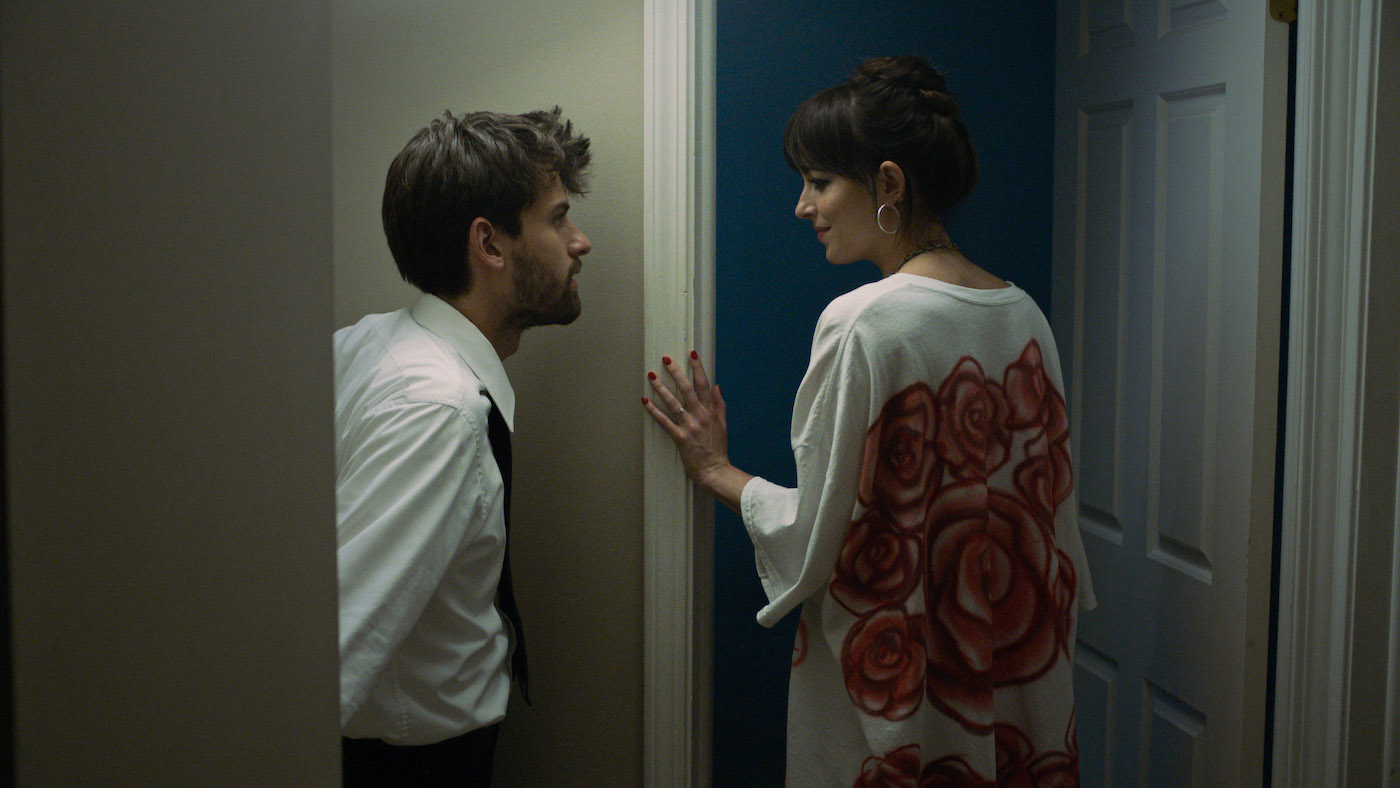
Cha Cha Real Smooth – Guild DP Cristina Dunlap shot this (the first of two features in the festival) for Writer/Director Cooper Raiff that stars Odeya Rush and Dakota Johnson and centers on a directionless college graduate who embarks on a relationship with a young mom and her teenage daughter, all while learning the boundaries of his new bar mitzvah party-starting gig. “When producer Ro Donnelly, from Am I Ok?, said she had another project I might be interested in called Cha Cha Real Smooth, I knew I was going to love it based on the title alone,” Dunlap recounts. “Having seen Cooper Raiff’s previous film, Shithouse, I was very excited to collaborate with him. We were lucky to have several months of Zoom preproduction calls to discuss the look and feel of the film before starting official preproduction in Pittsburgh, where we shot the film.” Dunlap shot on ALEXA Mini with Cooke S4 lenses, noting that the camera movement and lighting would match the emotional depth of the story’s complicated characters without glossing over anything. “It was a real challenge to come up with a lighting plan for seven different bar and bat mitzvahs,” Dunlap adds, “oftentimes only having one day or sometimes a half-day to film each one. I worked closely with my wonderful Local 728 gaffer, Justin Garcia, to make sure that every bar or bat mitzvah had its own unique look.” Dunlap says there are many “moments watching and being watched, and we wanted to translate visually how that feels,” she continues. “For this, we used an Angénieux HR 25-250, usually at the long end, and sometimes giving a small zoom to capture that feeling of falling for someone and catching their glance across a crowded room – as though they are the only thing in focus and that you are being drawn toward them.” Dunlap praises her Pittsburgh-based camera team, along with some regulars she was able to bring from her home base in Los Angeles. “I typically prefer to shoot with one camera; but with our schedule, it was just not possible for most of this film, especially with so many large party scenes,” she concludes. “I was so lucky to have two incredible operators – Greg Arch and Joel San Juan – who were always able to find a shot without compromising the other. Some days we were able to have two Steadicams going, and it was incredible to watch them both carry out a long shot, maneuvering through crowds and around each other and never missing a step, like professional dancers.” Guild members on the show included A-Camera Operator Greg Arch, A-Camera 1st AC Rick Crumrine, A-Camera 2nd AC Bill Crumrine, B-Camera Operator Joel San Juan, additional camera operators Kat Castro and Sean Murray, B-Camera 1st AC Ryan Sax, B-Camera 2nd AC Haji Muya, DIT Jason Johnson and Loader Kayla Lukitsch.
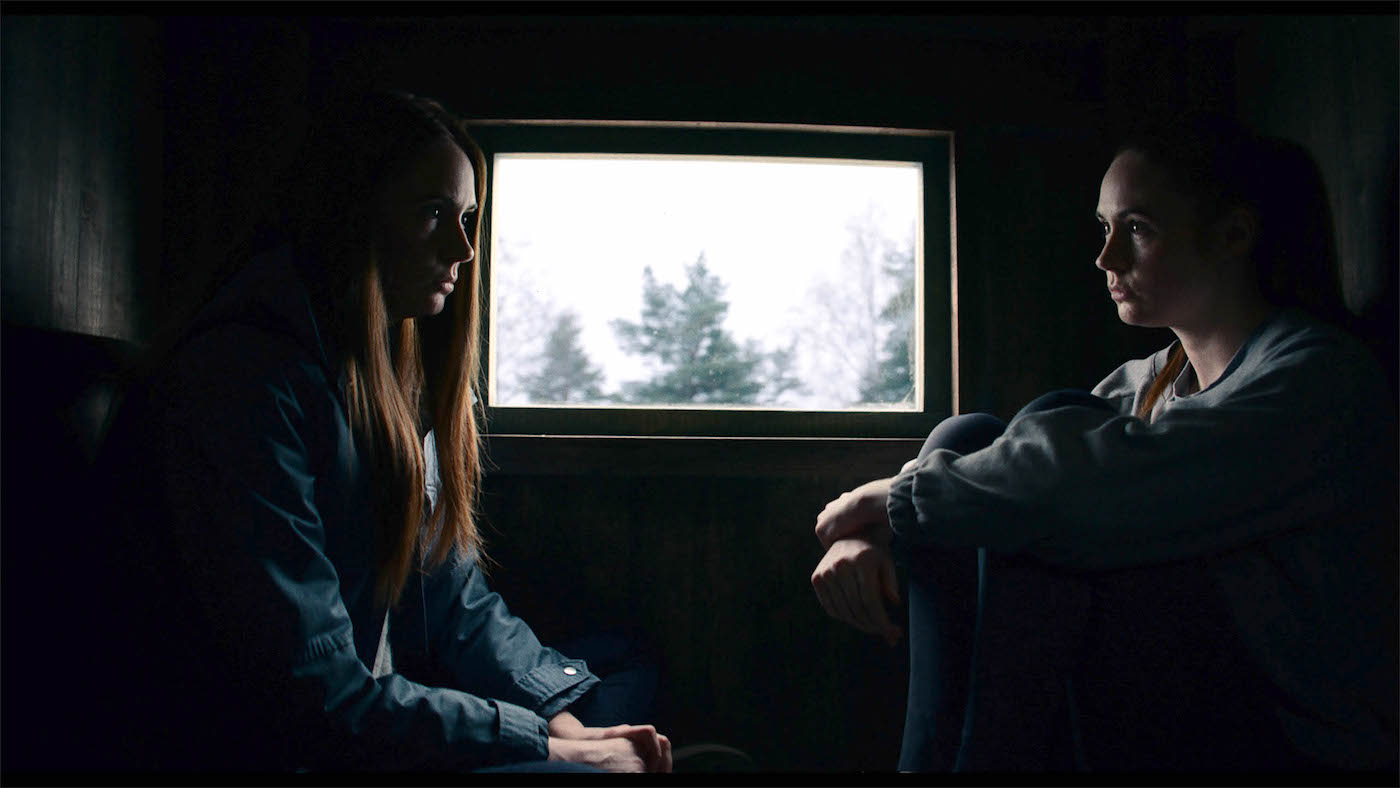
Dual – Local 600 Director of Photography Michael Ragen/Sundance alum shot this feature for writer/director Riley Stearns. After receiving a terminal diagnosis, Sarah (Karen Gillan) commissions a clone of herself to ease the loss for her friends and family. When she makes a miraculous recovery, her attempt to have her clone decommissioned fails and leads to a court-mandated duel to the death. The film was shot in Tampere, Finland during the winter of 2020. Because of the rapidly shortening days in the North, Ragen decided to shoot on Sony VENICE, which is also his current camera of choice. “Riley and I tested a variety of lenses at Vantage in Los Angeles, and both fell in love with their Hawk V-lite 1.3x anamorphics,” Ragen recounts, “which allowed us to shoot 4K 4:3 format on the VENICE and de-squeeze to a 1.85 aspect ratio finish.” Gillan plays two roles in the film, so Ragen employed motion control for some scenes. “We mostly used a Technodolly to achieve this, but in one instance we detached the head from a Techno 22 to be able to fit it in a smaller location as it could do the same highly accurate, genlockable head movements as the Technodolly without the arm – props to our motion control operator Karri Takala for that idea,” Ragen adds. “Karri also worked with Technodolly to tweak the software for us to modify the handset to give us a bloop flash on the handset’s LED for the Techno 22 for syncing takes. Critical to the motion-control and split-screen aspect was the work of DIT Paco Bouazza and VTR Michael Paulis working together to do audio playback for Karen to be able to act against herself in perfect sync with the Technodolly, as well as a synced video feed so we could do live composites with rough rotoscoping to see something close to the final result, even on a moving vehicle in one instance.”
Another tool Ragen utilized for camera movement was a three-foot camera slider from Hollywood Camera Sliders – designed by Key Grip Pete Yauri in L.A. – outfitted with a KFX Technology slider motor, which allowed for controlled or repeatable movements with the slider. “For some scenes, we were able to do micro-speed push-ins that lasted three minutes that would be extremely difficult to do by hand,” Ragen notes. “I worked with some excellent local department heads in Finland: Gaffer Timo Haapasaari, Key Grip Juha Niska, and First AC Waldo Calavera. Because of the pandemic we had a stripped-down G&E crew but not necessarily stripped-down lighting. Even for day exteriors, it was so dark in the Finland winter that we still rated the camera at 2500 ISO with no ND, and we could very rarely rely on natural window light for an interior scene.” Ragen also employed a Hudson Spider Redback and Mozzie on a regular basis for interiors, which he brought with him from L.A. “We also used LED Dedolights with their Lightstream mirror system, which I found particularly effective with ARRI M40s and M90s as well, where we would bounce the HMI into a 12-by-12 ultra-bounce outside of our set for a soft push through the window,” Ragen concludes, “and place a mirror in the middle of the bounce to aim a hotspot of light into the set for some more definition where we wanted to create an area of interest. During pre-production, we worked with Colorist Mark Kueper at Streamland Media in Toronto to develop a shooting LUT and then finished with him remotely from Streamland in L.A.”
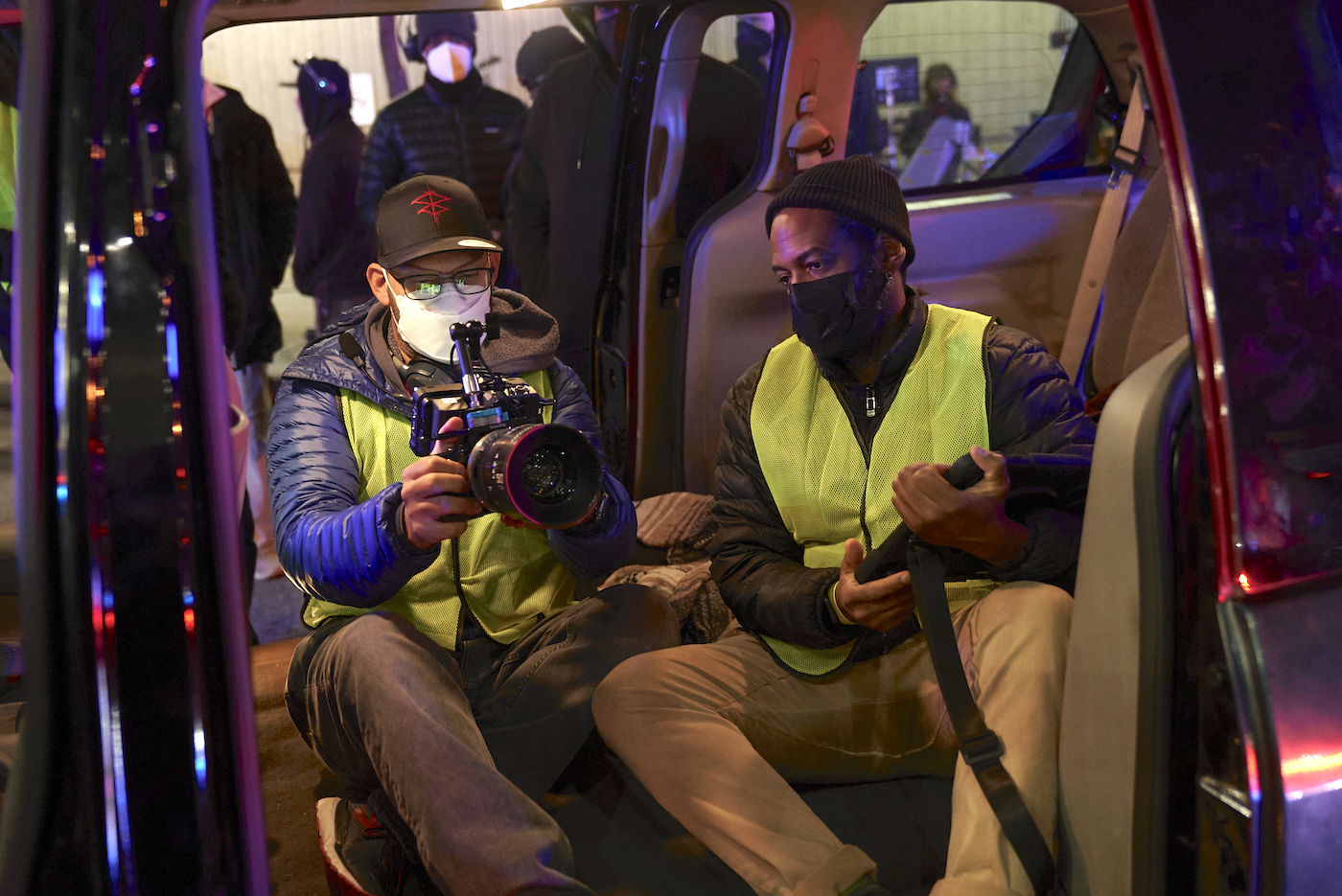
Emergency – Guild member Michael Dallatore makes his debut as a feature DP with this film from two-time Sundance alum Carey Williams (R#J, 2021), here making his U.S. Dramatic Competition debut with Emergency, the darkly comedic and wildly hard-hitting feature version of his short by the same name (a Special Jury Award winner in 2018). Straight-A college student Kunle and his laid-back best friend, Sean, are about to have the most epic night of their lives. Determined to be the first Black students to complete their school’s frat party legendary tour, the friends strap in for their ultimate assignment, Solo cups in hand. But a quick pit stop at home alters their plans when they find a white girl passed out on the living room floor. Faced with the risks of calling the police under life-threatening optics, Kunle, Sean, and their Latino roommate, Carlos, must find a way to de-escalate the situation before it’s too late. Dallatorre says he and Carey have collaborated on music videos and short films for the past 18 years. “Emergency is part-thriller, part-dark comedy, and love story,” he explains. “The social commentary has a level of levity that most will not expect, and we wanted the audience to feel like a part of the journey.” With one-third of the film shot in a van, Dallatorre was in close with the cast. “We shot ALEXA LF with Panaspeed T1.4 primes,” he continues. “The contrast, rectilinear distortion, and close focus ability made them a perfect fit for what we wanted to do visually and what we had to do technically.” The large Local 600 crew on the shoot included Dallatorre, A-Camera/Steadicam Operator Greg Johnson, A-Camera 1st AC Jackson McDonald, B-Camera Operator Justin Uchendu, B-Camera 1st AC Alan Newcomb, A-Camera 2nd AC Chase Schultz, B-Camera 2nd AC Daniel Irons, Loader Becca Bennett, and Unit Still Photographer Quantrell Colbert.
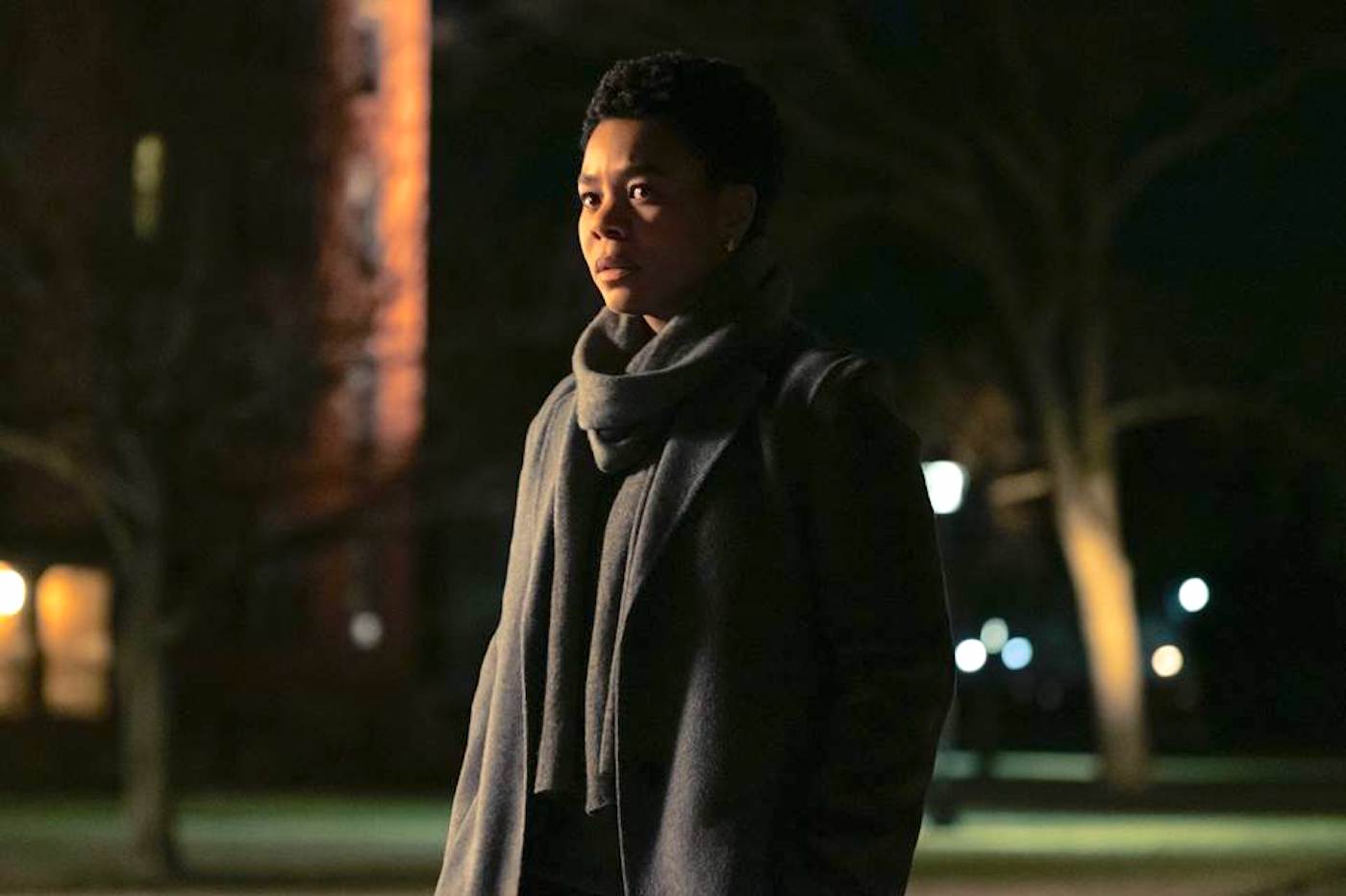
Master – ICG Director of Photography Charlotte Hornsby lensed this psychological drama from Writer/Director Mariama Diallo about three women striving to find their place at an elite New England university. As the insidious specter of racism haunts the campus in an increasingly supernatural fashion, each woman fights to survive in this space of privilege. The strong cast includes Regina Hall, Zoe Renee, and Talia Balsam. Hornsby says Mariama’s writing is“playful, melodic and moves beautifully. I love the process of transposing her language into images,” she adds. “The script was full of suspense sequences, and when we built the schedule we wanted to give these sequences time so she could build tension in the edit.” Hornsby says her camera operators, Devon Catucci and Billy Green, were instrumental in executing the Steadicam moves “that helped us create this mounting sense of dread. Billy would return to locations with me to choreograph camera moves and Devon’s ability to operate in the tiny stairwell of the master’s house, and the close quarters of the maid’s room was masterful,” Hornsby continues. “We shot on the ARRI/ZEISS Master Anamorphics, and the Angénieux 24-290 zoom. The range of the 12:1 and the Master Anamorphics’ 1.9 T stop was crucial for moving quickly when we needed to.” Hornsby also used the Black Diffusion FX to take off the digital edge. “It’s a filter set my 2020 AC Ben Spaner turned me onto, along with a custom set of filters my 2021 AC Evan Walsh commissioned our Scenic, Julie Marr, to make to try to match a pre-COVID haze sequence when COVID-set protocol forbade aerosols,” Hornsby explains. “They were lovingly coined, ‘The Julie filters’ in her honor. When we were in prep and I told my DIT, Hunter Fairstone, how much I wanted to shoot ARRIRAW, he made a crucial pitch to the producers that sealed the deal and opened up possibilities in the grade (colored by the phenomenal Sam Daley). The shoot began in February of 2020 and resumed in February of 2021, so there were a lot of curveballs with new cast, crew, and locations, but the local 600 team that spanned both shoots was incredible.” Joining Hornsby was a Guild camera team made up of operators Green and Catucci; 1st AC’s Walsh and Spaner; 2nd AC’s Helen Cassell and Bri Morrison; Loaders Jamar Olive, Peter Staubs, Manny Garcia, and Katherine Rivera; and DIT’s Hunter Fairstone and Malika Franklin.
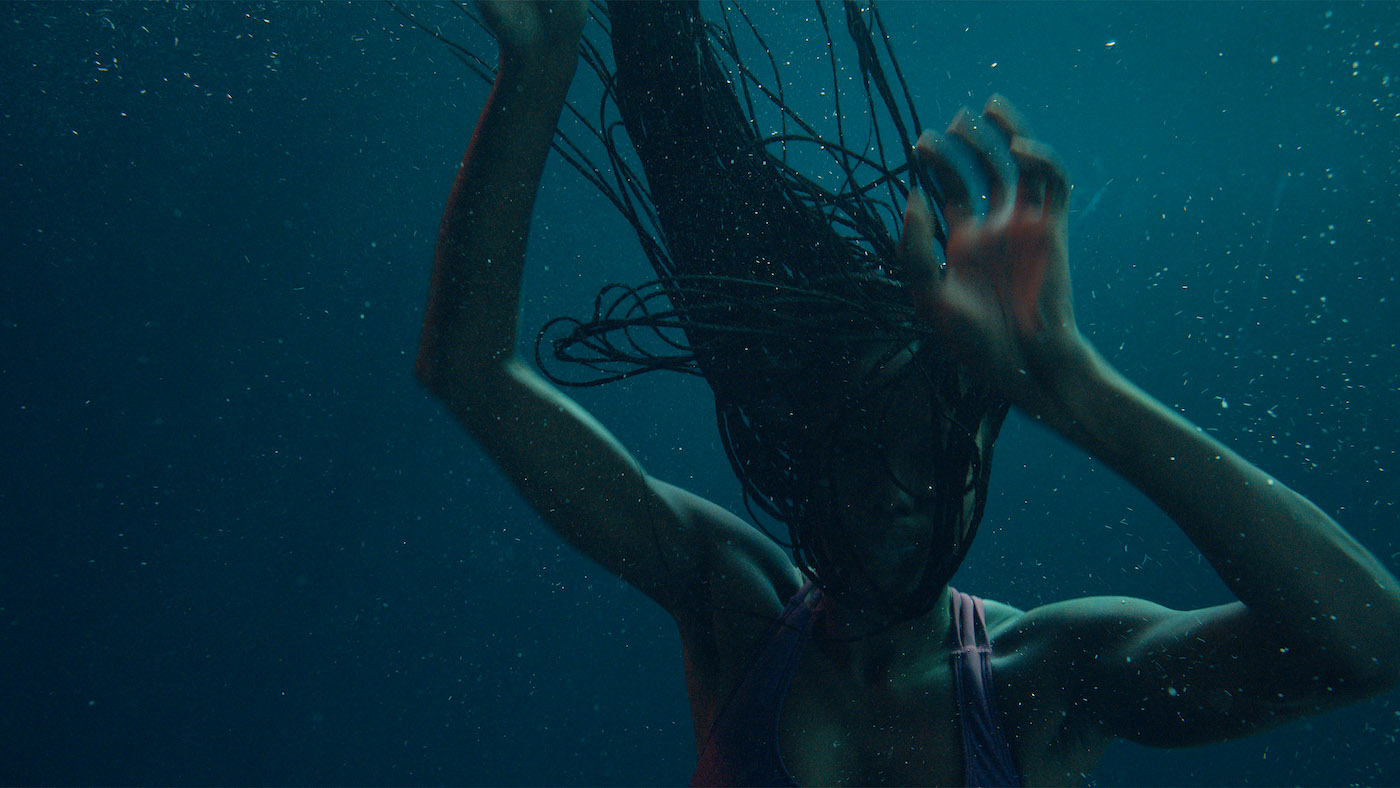
Nanny – Directed and written by Nikyatu Jusu and shot by Guild member Rina Yang, this story, about an undocumented nanny working for a privileged couple in New York City, drifts into supernatural territory when a presence invades the nanny’s reality, threatening the American dream she has painstakingly pieced together. Yang notes that “after having tested ALEXA LF and Sony VENICE, we decided to use the VENICE, given the small New York City location work – the ability to use the Rialto mode with the VENICE seemed like the right choice. We shot our main character, Aisha, on Panavision H-series (spherical), with a more handheld and loose approach. When Aisha’s working as a nanny and for the heightened moments, we shot on Panavision Ultra Panatar lenses with more controlled camera movements on the dolly. We liked the very subtle anamorphic characteristics of the Panatars and the flaring.” Joining Yang was Steadicam Operator Tanner Carlson, A-Camera 1st AC Jason Rihaly, A-Camera 2nd AC Kelsey Middleton, B-Camera Operator Michelle Marrion, B-Camera 1st AC Chris Gleason, B-Camera 2nd AC Zakiya Lucas-Murray, Remote Head Technician Lance Rieck, DIT Matt Suter, and Loader Dan Brown.
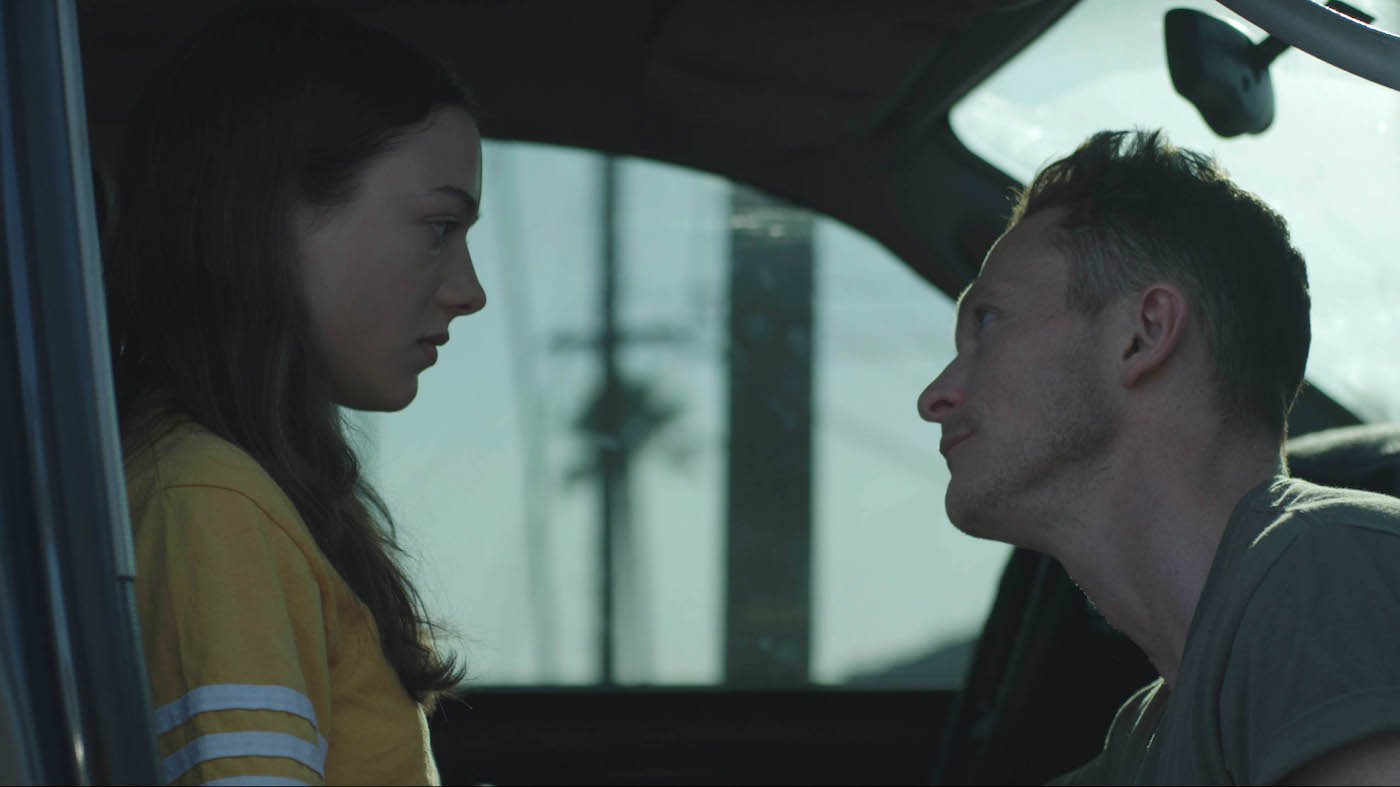
Palm Trees and Power Lines – Co-writer/Director Jamie Dack brings to the screen this story about a seventeen-year-old girl who spends her summer aimlessly tanning with her best friend, tiptoeing around her fragile mother, and getting stoned with a group of boys from school. This monotony is disrupted by an encounter with Tom, a man twice her age, who promises an alternative to her unsatisfying adolescent life. Local 600 Director of Photography Chananun Chotrungroj wanted to capture the emptiness, boredom, and suburban malaise “that our adolescent protagonist is experiencing, which eventually causes her to make certain life-altering decisions,” she explains. “Southern California has such great beauty in everyday life. We wanted to shoot empty landscapes and fill them with the emotions of our film’s characters. We shot thoughtfully composed frames while still maintaining a naturalistic feeling in the world and intimacy with our characters.” Chotrungroj says budget and time was the most challenging component of the project. “We had a very small crew, tight budget, and limited time,” she continues. “We’re so grateful to all the young and upcoming local filmmakers and crew members in Los Angeles who helped on the film. I’m so thankful for the support Panavision provided to us through their New Filmmaker Program. They gave us wonderful gears and technical support that elevated our visual approach.” Chotrungroj shot with the Panavision Ultra Speed set, “which gave us smooth realistic imagery to the eyes,” she concludes. “The lenses captured the lively textures for the skins. I loved how the lenses represented colors with both richness and subtlety – the colors felt full but not too vibrant.
World Cinema Dramatic Competition
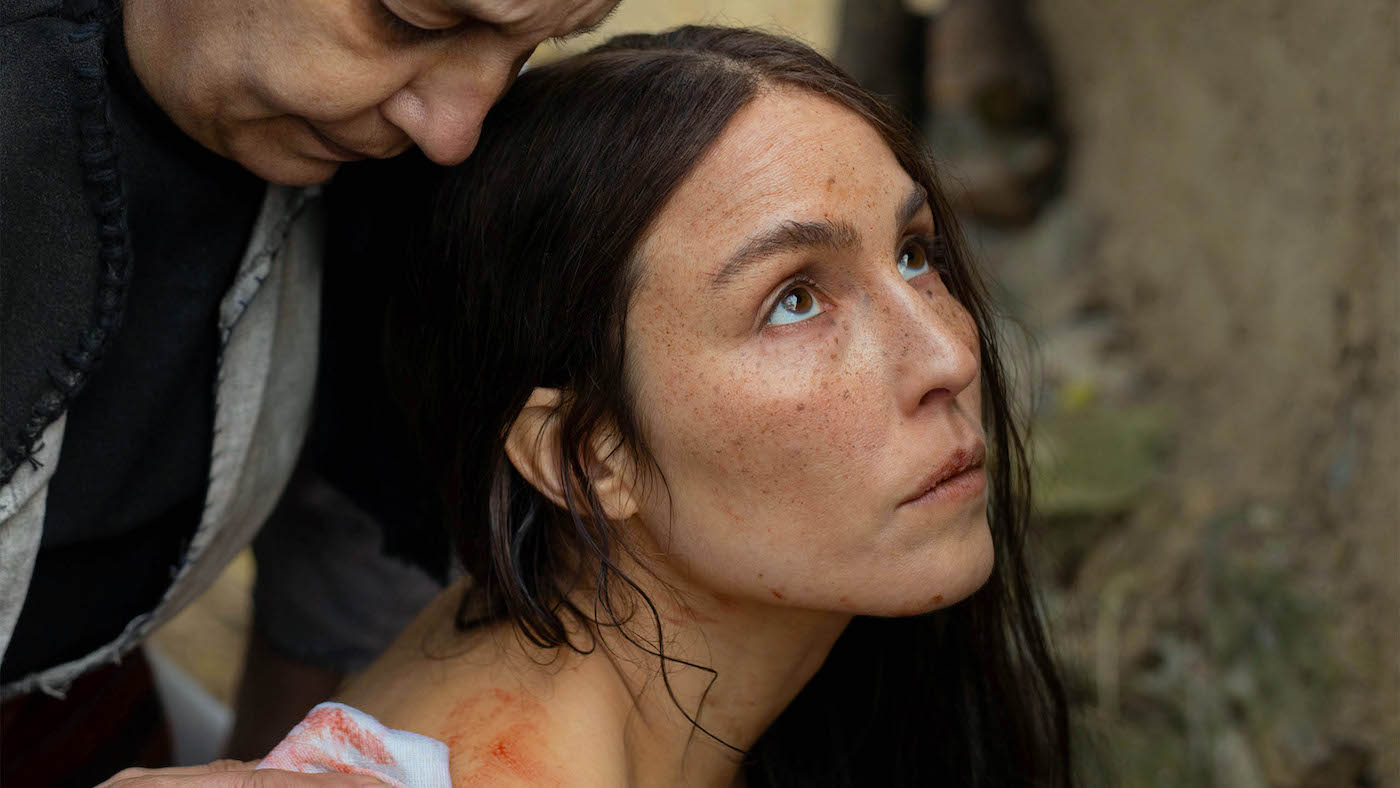
You Won’t Be Alone – In an isolated mountain village in 19th-century Macedonia, a young girl is taken from her mother and transformed into a witch by an ancient, shape-shifting spirit. Left to wander feral, the young witch beholds the natural world with curiosity and wonder. After inadvertently killing a villager and assuming her body, she continues to inhabit different people, living among the villagers for years, observing and mimicking their behavior until the ancient spirit returns, bringing them full circle. The debut feature of Australian-Macedonian writer-director Goran Stolevski, You Won’t Be Alone blends supernatural horror with poetic fable, yielding a sensory meditation on life that is unexpectedly emotional and profoundly humanistic. Even the malevolent ancient spirit, born of suffering and loneliness, is a contoured character. And the young witch (played by multiple actors, including Noomi Rapace, Alice Englert, Carloto Cotta, and Sara Klimoska) suggests a transcendent spirit who, across successive lives — woman, man, mother, child — experiences what it means to be human. Shot by Guild Director of Photography Matthew Chuang (who is nominated for an Independent Spirit Award for co-lensing Blue Bayou with Guild Director of Photography Ante Cheng – ICG Magazine December 2021 – keeps the audience creepily captivated. Chuang’s keen lensing brings viewers along to question for themselves what it truly means to be human and to marvel at the captivating life and magic of Bosika.
NEXT
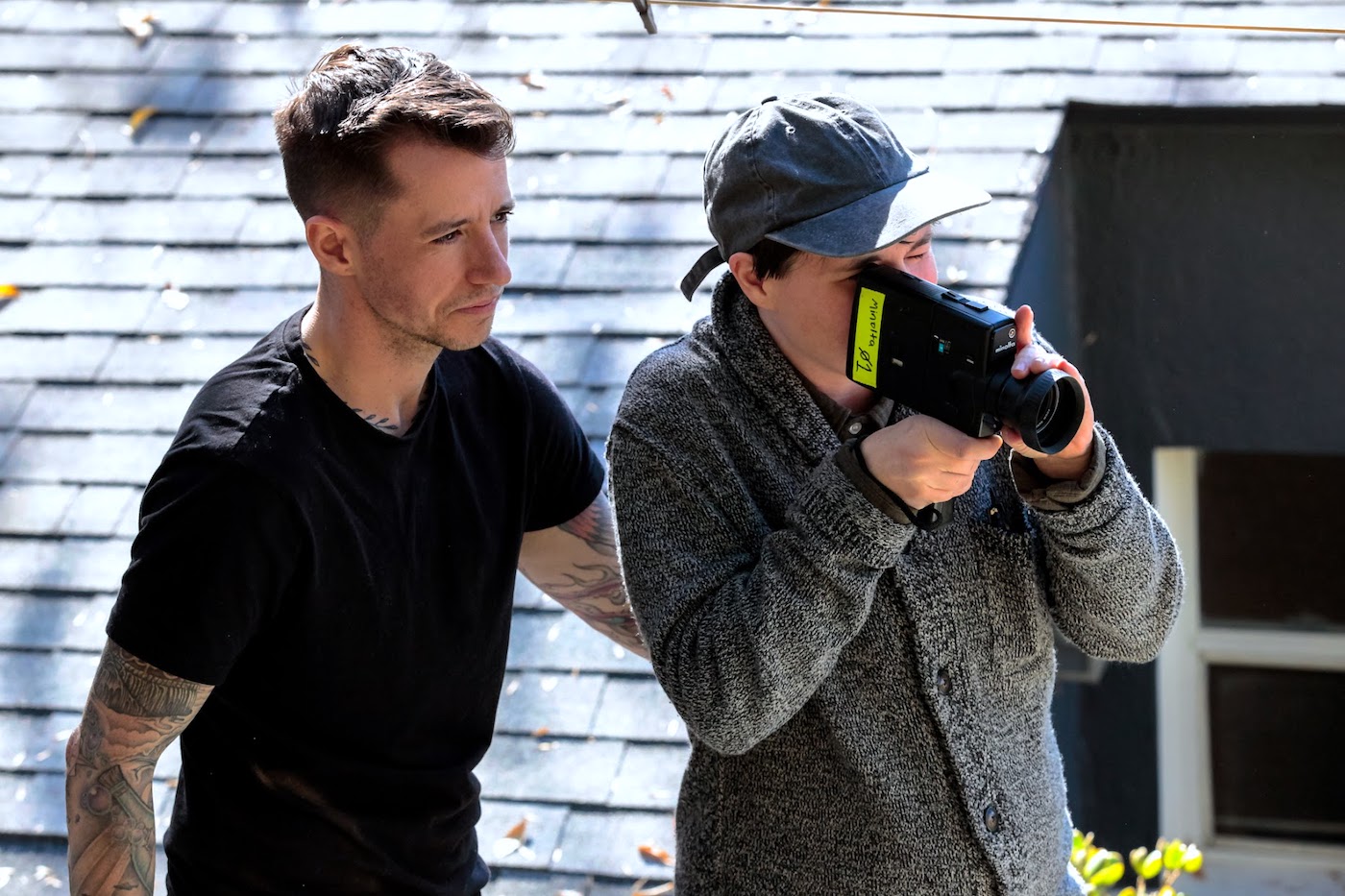
Framing Agnes – L.A.-based Camera Operator Aubree Bernier-Clarke lensed this documentary feature for director Chase Joynt. After discovering case files from a 1950s gender clinic, a cast of transgender actors turn a talk show inside out to confront the legacy of a young trans woman forced to choose between honesty and access. Bernier-Clarke says the biggest challenge in determining how to shoot the film “was figuring out how to create several distinct looks using an economical camera package. Both camera operator Lulu Wei and I already owned Sony FS7s because they are comfortable, versatile cameras that allow for speed and flexibility on doc shoots,” they share, “so we knew that they would work well for this project. One of the things I was up against was creating a look that would be true to a 1950s talk show using a 4K digital camera. For all of our period digital footage, I decided to use vintage Leica lenses with added filtration to soften the image, and we were thrilled with the effect.” Bernier-Clarke says the biggest risk on the project was shooting so many different formats, styles, and eras in a condensed amount of time. “Chase is a very creative documentary filmmaker,” they add, “and he came to me with a strong vision. Each day we would have to pivot back and forth from our 1950s talk-show set to period re-imaginings [instead of re-enactments] to modern vérité-style doc footage, and sometimes an amalgamation of these different styles. We had to move very quickly, and with three to four cameras in many setups, there was a lot to keep track of.” Bernier-Clarke says the reward was getting to be a part of a team that worked so effectively together to bring the vision to life. “We were a small team, but everyone was operating at 110 percent every minute of the shoot day, and it was quite inspiring,” Bernier-Clarke continues. “It is also always rewarding – and rare – as a queer, non-binary cinematographer, to get to work on a film set that includes so many members of the LGBTQIA+ community, both in front of and behind the camera. We weren’t just working together, but building community through this process, and I’ll never forget what an affirming experience that was.”
To accurately invoke a 1950s archival aesthetic, especially since so much of the film is built around this idea of archives, Bernier-Clarke’s initial instinct was to shoot film, “but 16/35 millimeter didn’t make sense,” they conclude. “When I suggested we shoot some of our re-imaginings on Super 8 millimeter, Chase was all in. Super 8 was the first media I shot films on as a teenager, and it will always hold a special place in my heart. I got to dust off my Super 8 camera collection and chose two of my favorites for this project – my Canon Auto Zoom 814 and my Minolta XL 401. I’m super happy with how we were able to integrate the Super 8 footage, and I think it adds a warmth and authenticity that I love.” Joining Bernier-Clarke were Local 600 Camera Operator Ava Benjamin Shorr, who also did additional cinematography for some pickups, and AC Hannah Welever.
Premieres (Narrative and Documentary)
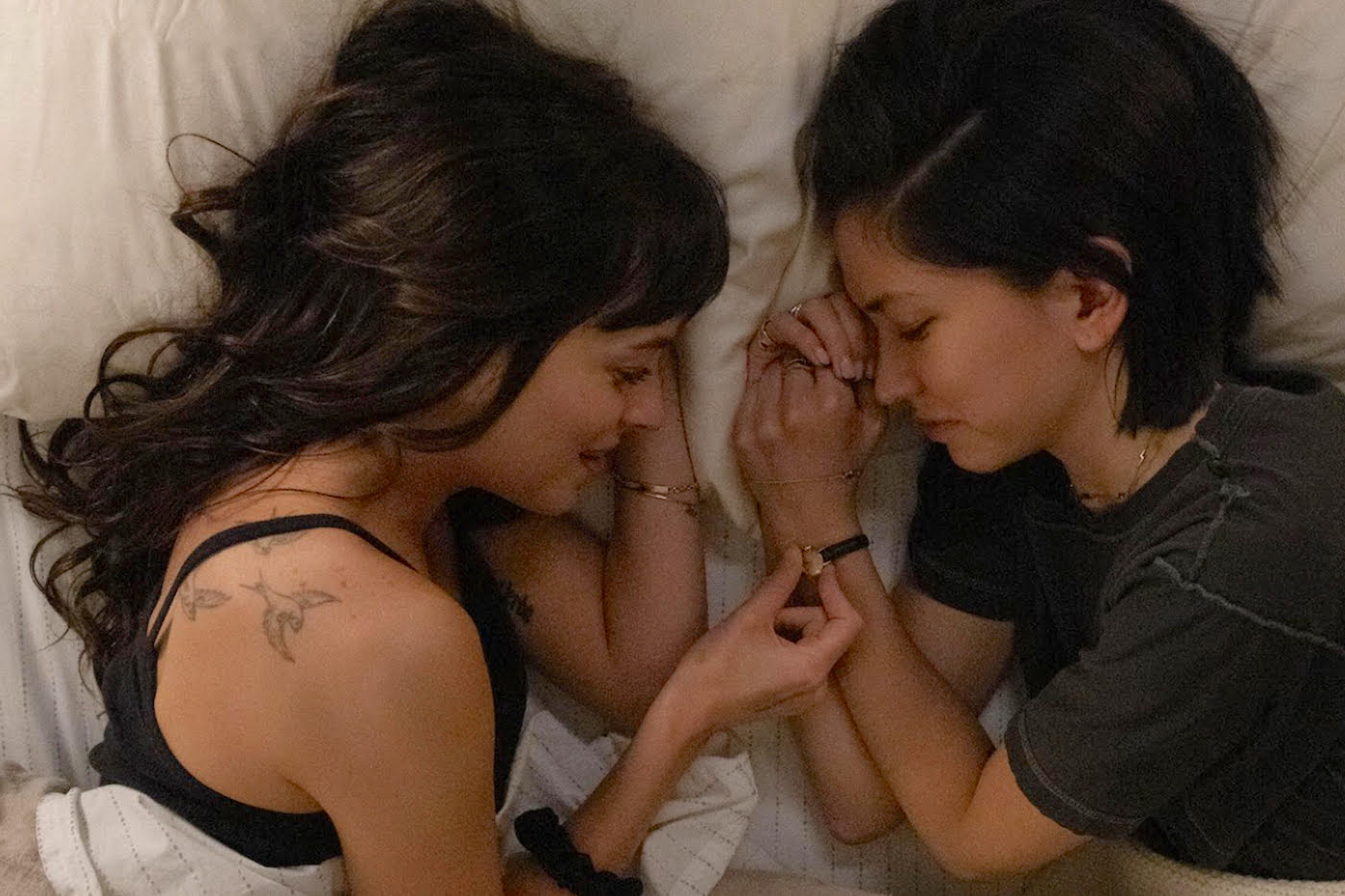
Am I OK? –The second of Guild DP Cristina Dunlap’s feature premieres at Sundance was done for co-directors Stephanie Allynne and Tig Notaro. The story centers on two best friends, Lucy (Dakota Johnson) and Jane (Sonoya Mizuno), who, having known each other for most of their lives, think there are no secrets between them. But when Jane announces she’s moving to London, and Lucy reveals a long-held secret, their friendship is thrown into chaos. The film was shot in Los Angeles in February and March of 2021, and while Dunlap says “shooting an indie feature mid-pandemic was a challenge, it did make it possible for us to shoot in many locations that I had always dreamed of shooting in but most likely would not have been able to afford had they not been shut down. When I went with the directors to scout for the first time in person, it felt like we were walking into spaces where people had just suddenly vanished. It was so surreal to walk into a bar that looked completely abandoned or a yoga studio that still had schedules up on the wall from March of 2020. Nothing had been touched but everything had a layer of dust!” Dunlap shot on ALEXA Mini with Cooke Speed Panchros. She says it was important to capture the spirit of Los Angeles without it feeling parodied but with self-awareness. “Having grown up in L.A.,” she continues, “it is a city near and dear to my heart, and I wanted to give a naturalistic look to locations I’ve been patronizing for most of my life. I thought the Cooke Panchros, with their warmth and gentle fall-off, were a great choice for capturing the sun-drenched environments. We knew that we were going to be spending a lot of time up close and personal with Lucy and Jane in their cramped apartment and workplaces, and these lenses are amongst my favorite for shooting faces and portraits. Not only do they have a flattering softness and painterly quality, but they have a small footprint, making it is easy to get physically where you need to be in the scene as an operator.” Joining Dunlap on the project were many Guild members Dunlap has worked closely with for years, including A-Camera Operator Greg Arch, A-Camera 1st Rachel Fox, A-Camera 2nd AC Renni Pollock, B-Camera Operator David Liebling, B-Camera 1st AC Karla Wilson, B-Camera 2nd AC Kyle Petitjean, and DIT’s Tamas Harangi and Teddy Phu-Thanh-Danh.
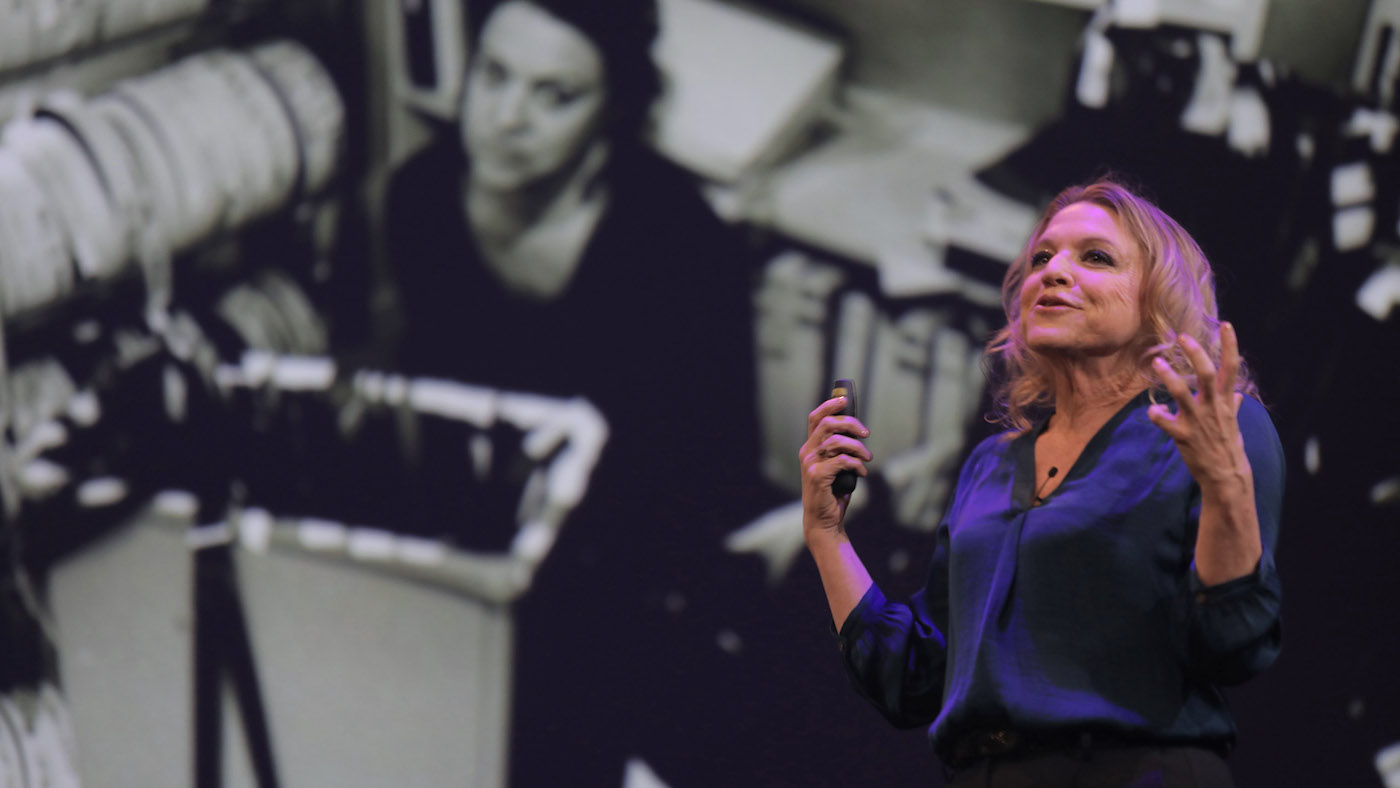
Brainwashed: Sex-Camera-Power – Director/Producer Nina Menkes is back on the indie film festival circuit with a film based on her writings Sex & Power: The Visual Language of Cinema, a mesmerizing journey into how shot design intersects with the twin epidemics of sexual abuse/assault and employment discrimination against women. Veteran Sundance DP Shana Hagan, ASC, shot this project that contains more than 175 film clips that will unalterably change the way we view and make movies.
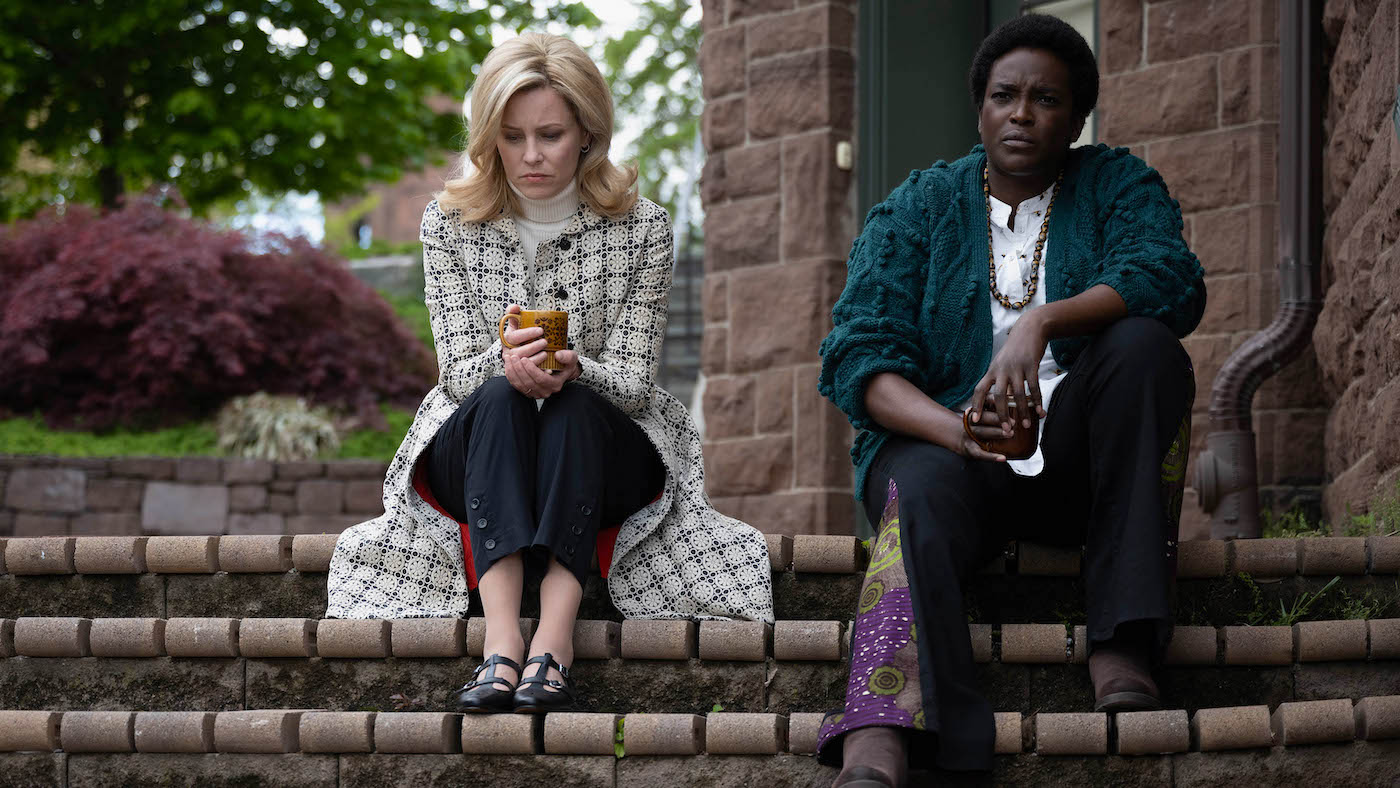
Call Jane – Guild DP (and Sundance alum) Greta Zozula [ICG Magazine December 2018] shot this film set in 1968 Chicago for Director Phyllis Nagy. Elizabeth Banks stars as a suburban housewife who, after having a life-saving secret abortion, seeks to give women access to healthy and safe abortions through an underground collective of women known as “Jane.” Zozula says that from the beginning of prep she and Nagy decided to shoot on 16 mm. “It seemed to be a no-brainer,” she describes. “The film takes place in the 1960s/70s and wanted to feel grounded in a place and time. In my mind, sixteen millimeters got us more than halfway there. We chose Master Primes because they were the cleanest lenses, and even though sixteen millimeters was the choice for grain and color, we didn’t want to lose any more detail than we had to.” As Zozula was also operating A-Camera, she credits her (Local 52) Gaffer Noah Chamis, “who was my right hand and lit a beautiful film,” she adds. “Noah and I have collaborated on quite a few films, and I couldn’t have done it without him. I also need to credit our [Local 478] Dolly Grip Adam Beard, who pulled off the most complex combinations of dance floor, free-form dolly moves I have ever seen. Phyllis and I were very specific on where we wanted to use a dolly and where we used Steadicam, and there were no substitutions.” Zozula calls her Guild camera team “unbelievable,” noting that “first AC Rob Agulo pulled on a shot at the beginning of the movie that ends in close focus. It’s the kind of shot any technician would stress over, but Rob just nailed it. Our second AC, Amaya Chenu, and Loader AJ Strauman-Scott are not only skilled at their jobs but also bring the best energy to set – they were my life support. I feel so incredibly lucky to be surrounded by people who so generously share their talents. It’s what I love about making movies. The collaboration process is so unique, and when it’s fully realized, it can be magic.” Also joining Zozula were Steadicam Operators Tom Wills and Afton Grant, B-Camera Operator Michael Merriman, B-Camera 1st AC Adam Gonzalez, B-Camera 2nd AC, Nat Pinheiro, and Unit Still Photographer Wilson Webb.
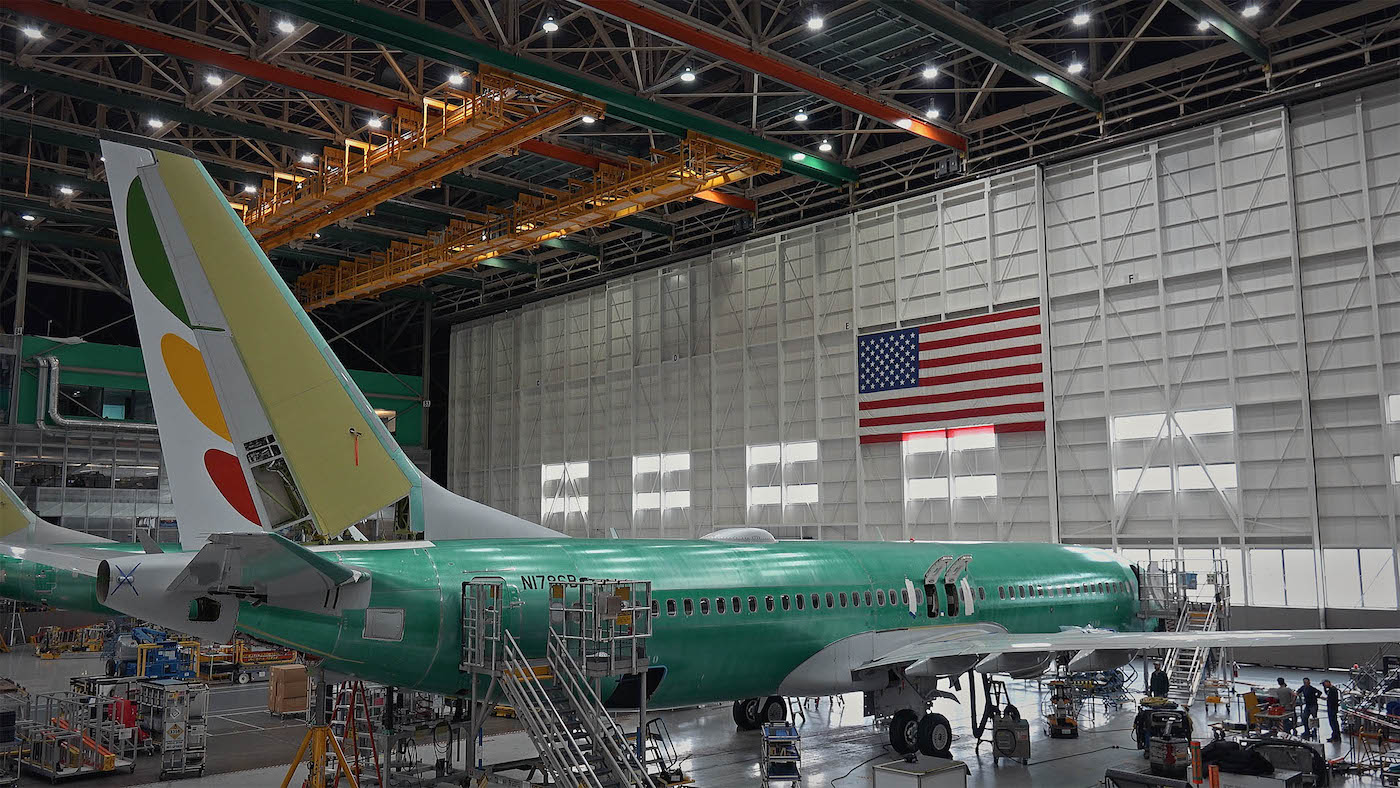
Downfall: The Case Against Boeing – Graham Willoughby shot this new documentary (with additional photography by Shana Hagan, ASC) for Director/Co-writer Rory Kennedy, centering on the investigation of the two Boeing 737 MAX crashes that killed 346 people. The film explores both the root causes and the human cost and is a chilling portrait of a crumbling corporate culture as well as a fierce indictment of Wall Street’s corrupting influence.
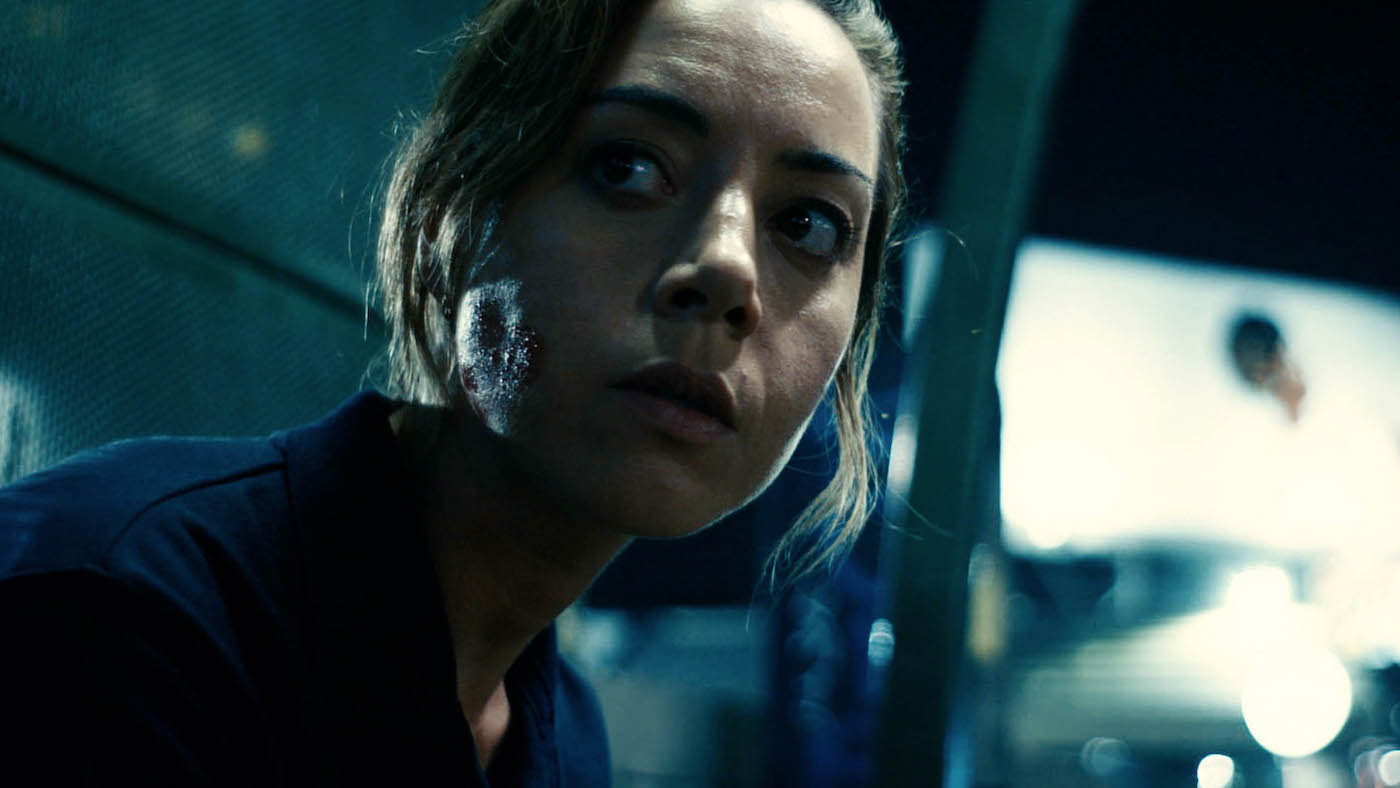
Emily the Criminal – Guild DP Jeff Bierman shot this indie drama for Writer/Director John Patton Ford starring perennial Sundance “it girl” Aubrey Plaza, who plays Emily, a young woman saddled with debt who gets involved in a credit card scam that pulls her into the criminal underworld of Los Angeles that ultimately leads to deadly consequences.
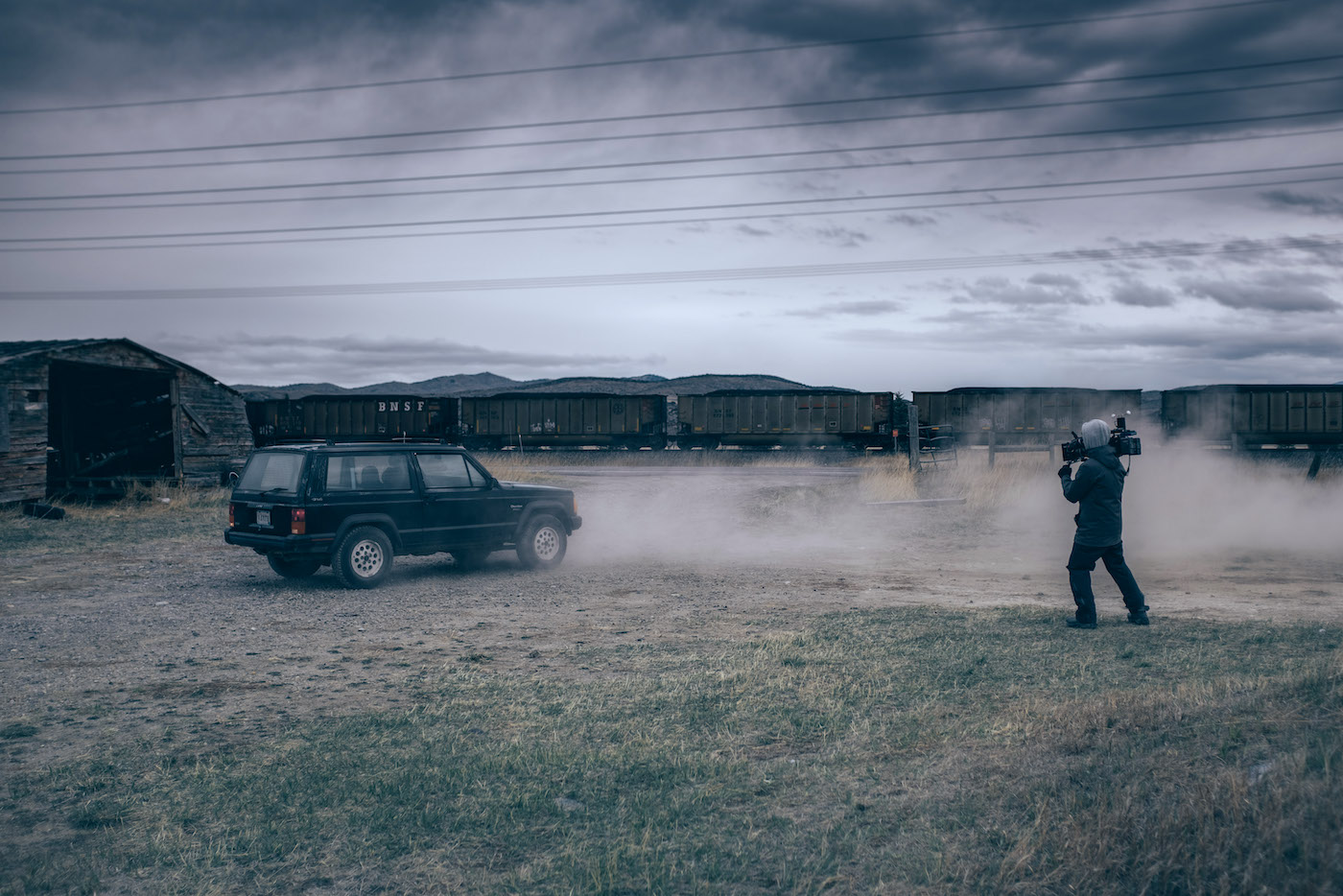
God’s Country – Andrew Wheeler shot this indie drama from director/producer/co-writer Julian Higgins about a grieving college professor (Thandiwe Newton) who catches hunters trespassing on her property and is drawn into an escalating battle of wills with catastrophic consequences. Newton occupies almost every frame of the film; close-ups of her calm, grief-stricken face show the despair and tension of a crumbling human spirit, yet also someone who is composed and no longer willing to yield. The movie examines one woman’s grieving process and determination to be taken seriously amid her refusal to surrender to the confines of society. Guild members on the project joining Wheeler included 2nd Unit Director of Photography Hannah Getz, A-Camera 1st AC Sebastien Thibeau, A-Camera 2nd AC’s Patrick LaValley and Brian Winikoff, and B-Camera 1st AC Stefan Tarzan.
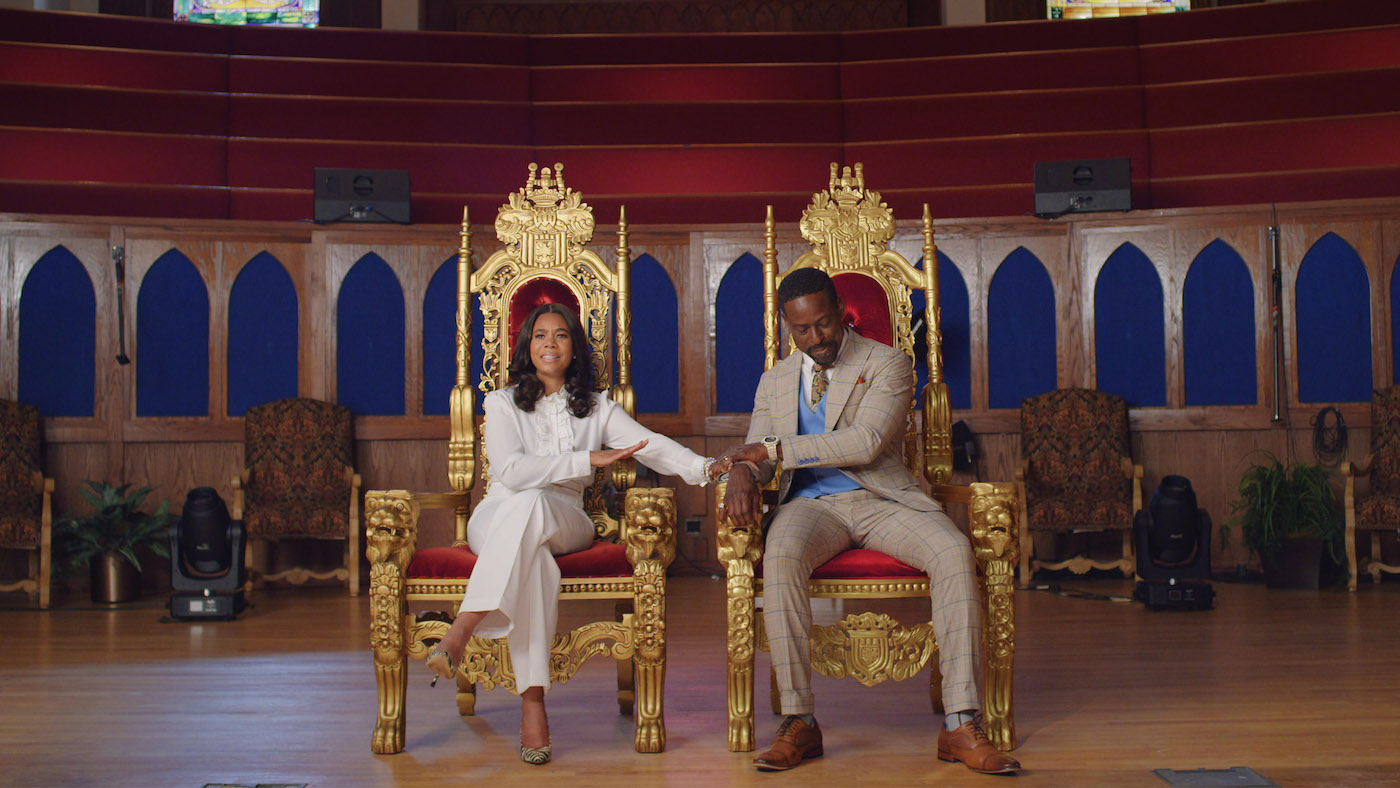
Honk for Jesus, Save Your Soul – Guild DP Alan Gwizdowski, working with an Atlanta-based Local 600 team, lensed this comedy for Writer/Director Adamma Ebo (and Oscar-winning actor/producer Daniel Kaluuya), which follows Trinitie Childs (Regina Hall) and her pastor husband, Lee-Curtis Childs (Sterling K. Brown), who work to rebuild their Southern Baptist megachurch congregation after a scandal. A-Camera 1st AC Mary-Margaret Porter, working closely with A-Camera Operator Catherine Green, says the film was shot in two different styles: cinematic using anamorphic lenses, and documentary-like, going handheld with zooms to help tell the behind-the-scenes story. “It was an absolute pleasure to see Sterling and Regina bring these characters to life every day,” Porter reflects. “They would go off-script, and it would be hard to not start laughing and stay focused. I felt for the operators who had to try so hard not to break during a shot.” But Porter says the film is not all about the laughs. “There is a heart-wrenching scene with Regina that had tears streaming down all our faces because she was exposing her character’s raw emotions so vividly.” Porter says the biggest obstacle was filming two weeks outside in summer in the Georgia heat. “We shot mainly in a church parking lot, near a road,” she concludes, “and the heat off of the asphalt drained you so much faster than normal.” Joining Gwizdowski, Green and Porter were Guild members Nick Gowin (A-Camera 2nd AC), Vincent DeVries (B-Camera Operator), Nick Gowin (B-Camera 1st AC), Anthony Mack (B-Camera 2nd AC), Jonathan Valdez (Utility), Khiry Morgan (Loader) and Steve Swisher (Unit Still Photographer).
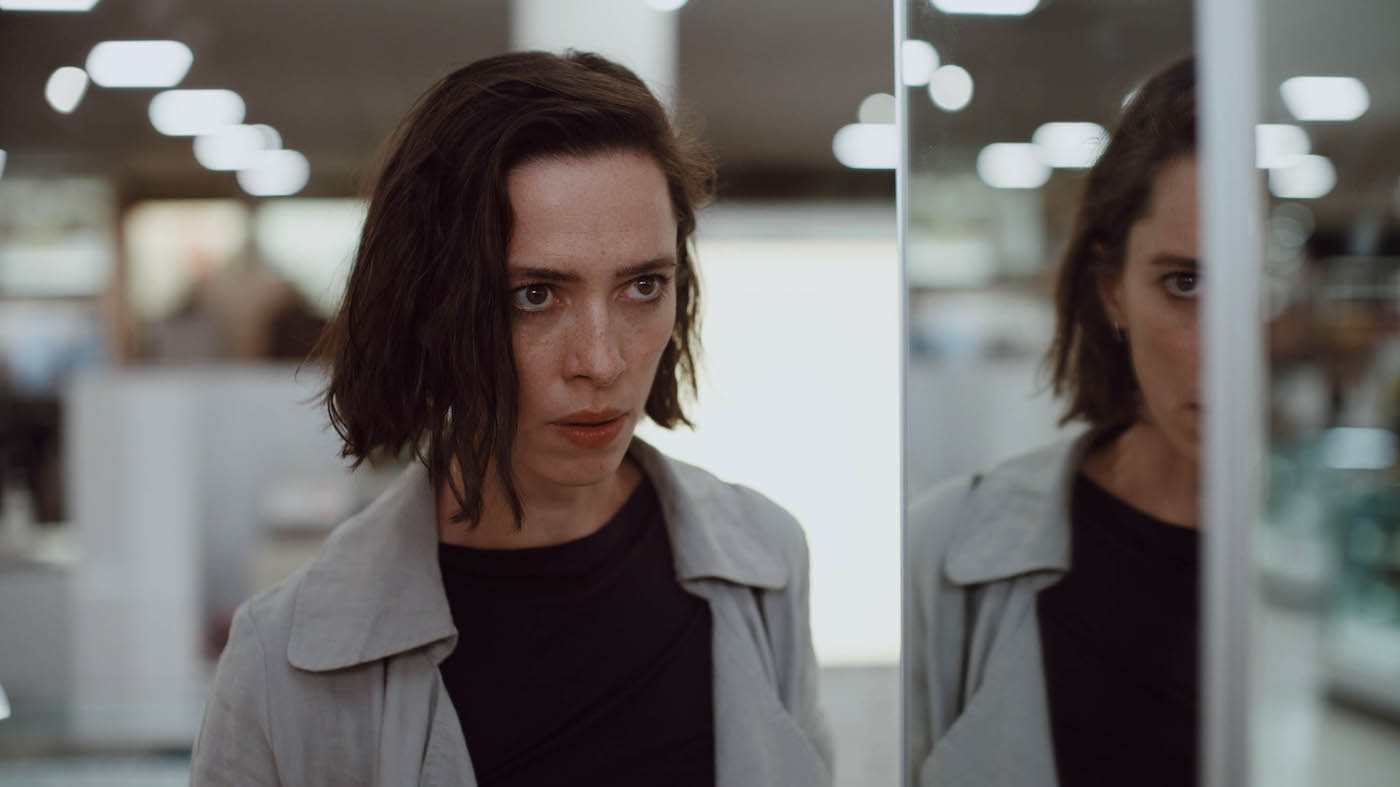
Resurrection – Local 600 Director of Photography Wyatt Garfield (Beatriz at Dinner, Kajillionaire) shot this indie feature for Writer/Director Andrew Semans that stars Rebecca Hall as Margaret: a capable, disciplined, and successful woman whose life spins out of control when David (Tim Roth) returns, carrying the horrors of Margaret’s past.

Sharp Stick – Sundance alum Ashley Connor lensed this ultra-low-budget feature for eight-time Emmy-nominated writer/director Lena Dunham. Sarah Jo is a naïve 26-year-old living on the fringes of Hollywood with her mother. When she begins an affair with her older employer, Sara Jo is thrust into education on sexuality, loss, and power. Connor shot Sharp Stick in December 2020, while Los Angeles was peaking with COVID cases and heading into another lockdown. “We filmed for a swift 15 days following every guideline. Needless to say, it was difficult and presented many challenges shared by all low-budget films created during the pandemic,” Connor recounts. “More specifically, the film explores our main character Sarah Jo’s (played by the incredible Kristine Froseth) sexual awakening. I found filming intimate scenes where people touch and lick and breathe heavily into each other’s mouths while I was in full PPE to be… strange, dangerous, and emotionally confusing! Human touch felt very illicit at the height of COVID. Luckily, Lena is an intensely present and caring director and made us all feel safe. She guides the set with a gentle yet commanding hand, and it was easy to be a vulnerable collaborator under her leadership.” Joining Connor were Local 600 members Dan Schroer (1st AC), Em Michelle Gonzales (2nd AC), and DIT Matt Maio.
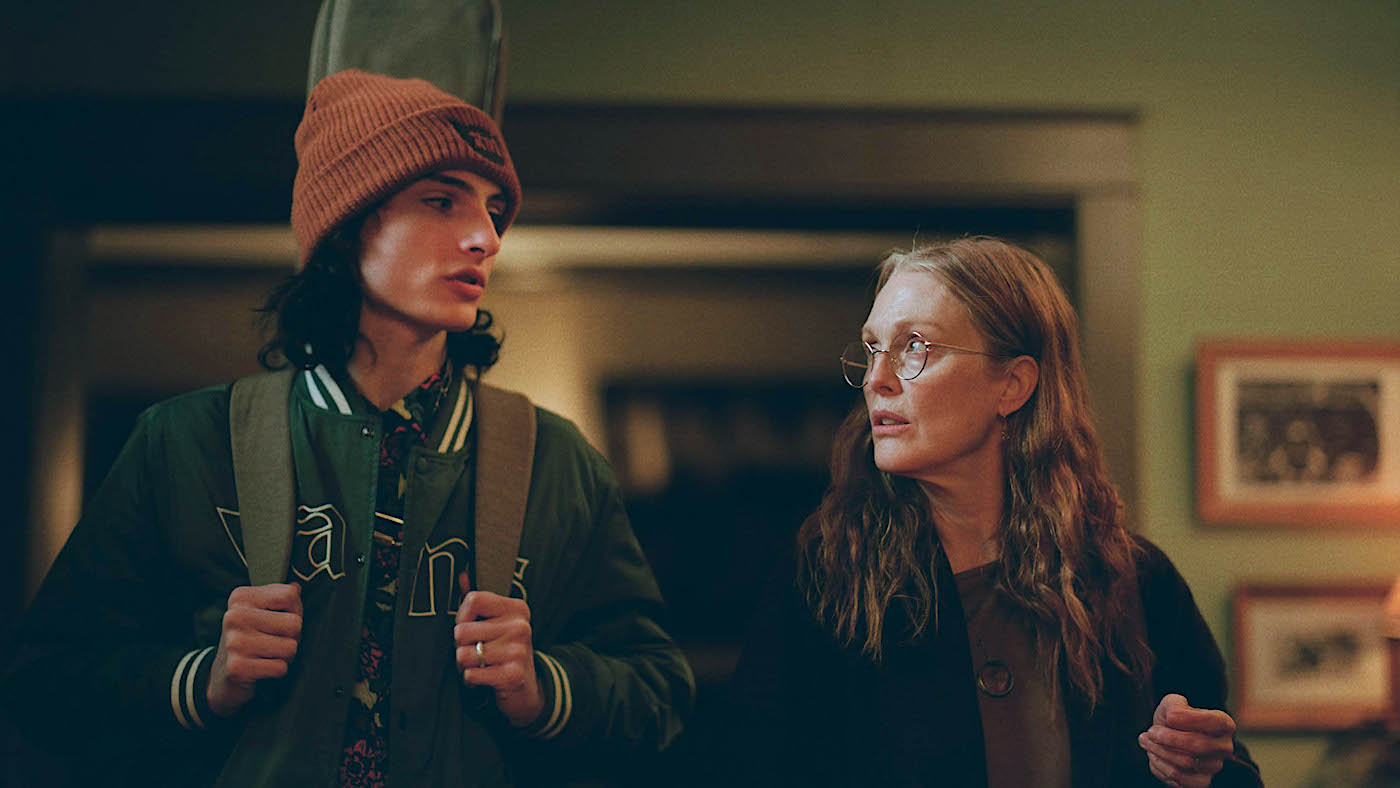
When You Finish Saving the World – Frequent Sundance actor Jesse Eisenberg returns with his feature debut as a writer/director with this tale of Evelyn (Julianne Moore) and her oblivious son, Ziggy (Finn Wolfhard), who seek out replacements for each other. Evelyn desperately tries to parent an unassuming teenager at her shelter, while Ziggy fumbles through his pursuit of a brilliant young woman at school. Guild DP Benjamin Loeb says he came on board “to shoot Jesse’s film, which was based on the life of his mother-in-law, and the first thing I was told was that it ‘needed’ to be shot on film. It was not something I was against – in fact, I had never had to work so little to get film approved.” Loeb and Eisenberg debated whether 16 or 35 millimeter was the right choice – and they landed on shooting S16 millimeter, with the majority of the film on the Vision 3 200T stock for the finer grain and muted tones. “We wanted the film to be contemporary but still have a feeling of nostalgia in terms of its texture and imperfection,” Loeb continues. “We ended up with a 416 from Panavision and utilized Primo lenses. The film was shot in Albuquerque, NM, but the story was set in Indiana, which didn’t make our location process very easy. It was all about finding pockets or slivers in the city that felt Midwest enough and giving ourselves the little creative leniency to accept certain elements of our surroundings.” The production began in November of 2020, just as U.S. COVID numbers were beginning to peak. “I had Jake McGee as my operator, which allowed me to be close to Jesse while we were shooting, and Jake and I communicated through EarTecs, as we were all in different bubbles trying to limit contact on set,” Loeb relates. “It was the first time I had worked that way, but it was honestly nice to be able to spend the time viewing the frame from the monitor with Jesse next to me. It created a safe space for us to talk about what was working and what wasn’t, which made things quite efficient while we were shooting.” Joining Loeb and McGee were Guild members Meghan Noce (1st AC), Steve Whitcomb (2nd AC), and Loader Jannis Schelenz.
Midnight
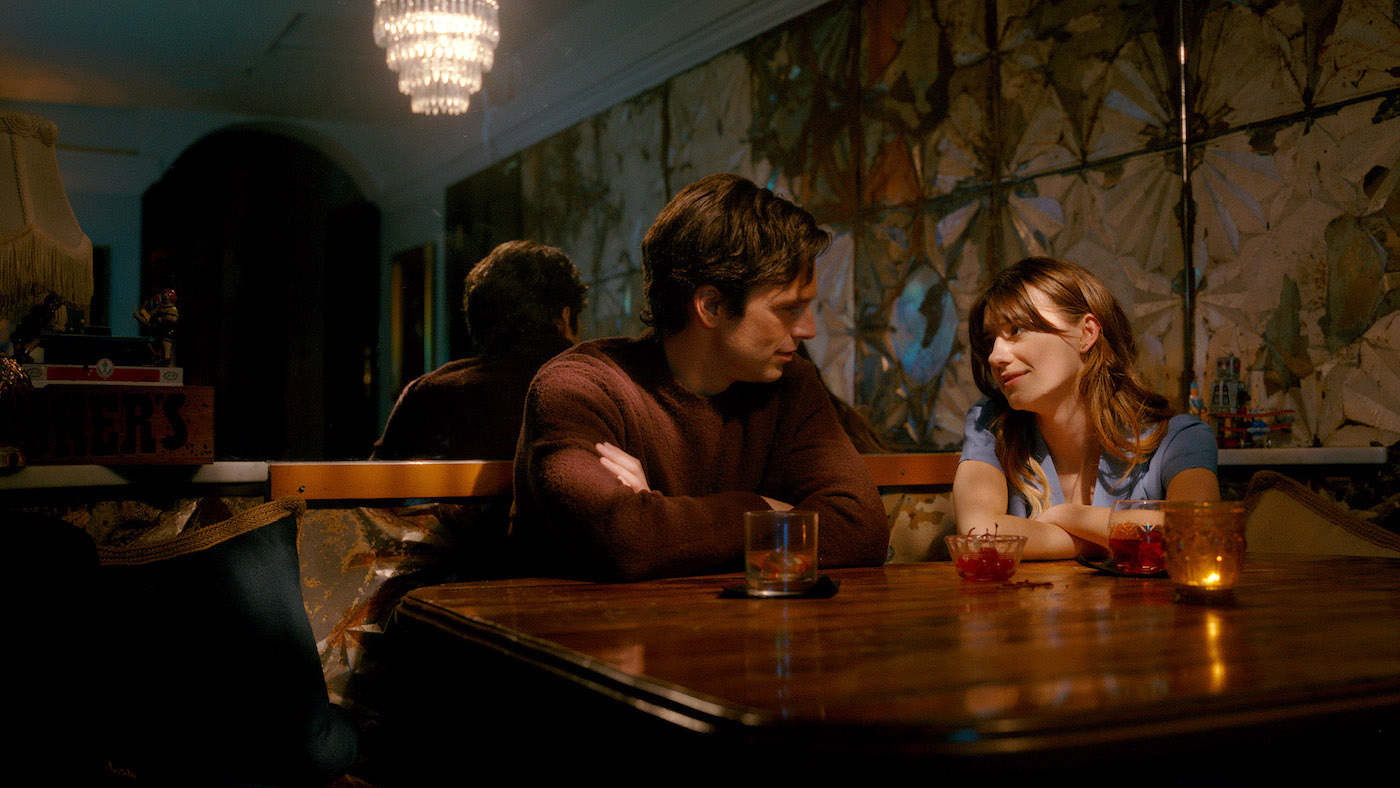
FRESH – Local 600 DP Pawel Pogorzelski shot this feature for director Mimi Cave (and executive producer Adam McKay) about the horrors of modern dating seen through one young woman’s defiant battle to survive her new boyfriend’s unusual appetites. Pogorzelski, who shot the film in Canada, describes the project as “a fun and exciting shoot where we played with POV shots. The most challenging segments were the night exterior shots in a dense forest in the cold. It’s very difficult to light a vast exterior at night.” Pogorzelski praises his A-Camera/Steadicam Operator, as well as the creative food photography shot by the B-Camera Operator whenever the scene was single camera only. “Trying to get lenses adjusted by Panavision at a distance was tricky for me,” he adds. “But Brian Mills pulled through once again for us and created something special for the film. Mimi, our director, had a clear vision and made the shoot that much easier and enjoyable.”
Spotlight
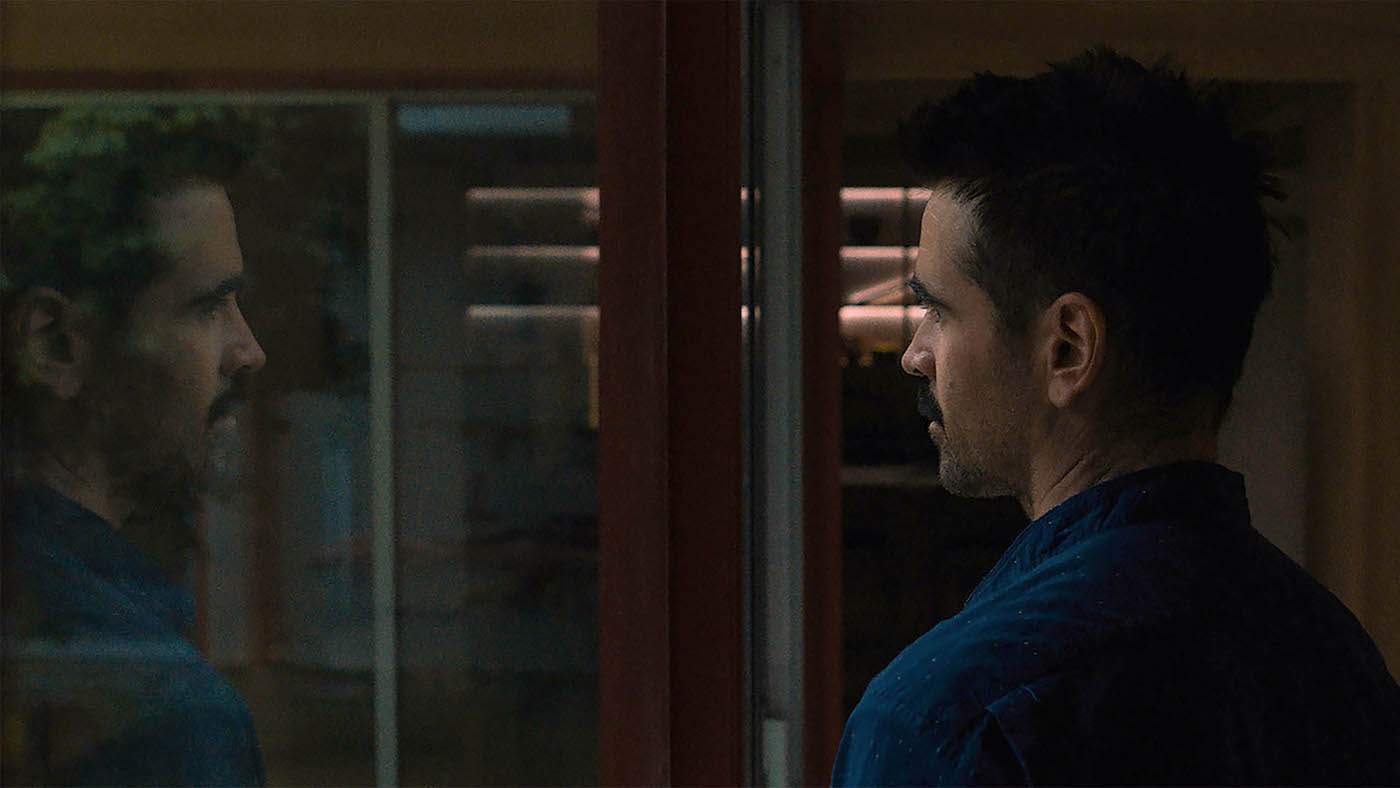
After Yang – Director of Photography Benjamin Loeb lensed this, his second premiere at Sundance 2022, for writer/director Kogonada. In the near future, a father and daughter try to save the life of Yang, their beloved robotic family member. Loeb says he and Kogonada compare filmmaking to “the conception of a good ramen broth. The time, love, and attention required in each layer of the broth are what inspired us, rather than the individual ingredients. And to understand ramen broth, we had to eat a lot of ramen during our prep in New York,” he laughs. Loeb adds that “Kogonada’s love for [Japanese director] Yasujirō Ozu is no secret to those who know him, and he was a huge reference for our conversations about how we wanted to approach After Yang, specifically for the ‘screen-calls’ within the film. We spent a lot of time discussing how the characters inhabit the space between and around them, which was something that inspired me deeply when seeing Kogonada’s first film, Columbus.” Loeb used the ALEXA Mini for its versatility, noting that they wanted After Yang to be a “meditative experience,” grounded in reality even though it’s considered science-fiction. “Kogonada and I were more interested in the mundane aspects of our characters’ lives,” Loeb continues. “My colorist, Joe Gawler at Harbor, had created a LUT for me during prep that pushed me to light more specifically in layers as it pulled the gamma down quite a bit, and in this way, to retain more control. This was something our gaffer, Andrew Hubbard [who worked with Loeb on his other Sundance premiere, When You Finish Saving the World], and Key Grip Ethan June, and I all spent a lot of time experimenting with during prep trying to figure out how the lighting of the film wanted to be rendered in the end. We wanted the layers of the film to have different individual qualities and ended up using detuned Primo lenses from Panavision for most of the film, as well as a Pathé lens for the screen calls, and a Canon 8-64 zoom for Yang’s memories, which were shot in the Mini’s S16-millimeter sensor mode.” Joining Loeb (who operated on the film) were Guild members David Regan (1st AC), Olivia Kimmel (2nd AC), and Digital Loader Cheryn Park.
Kids
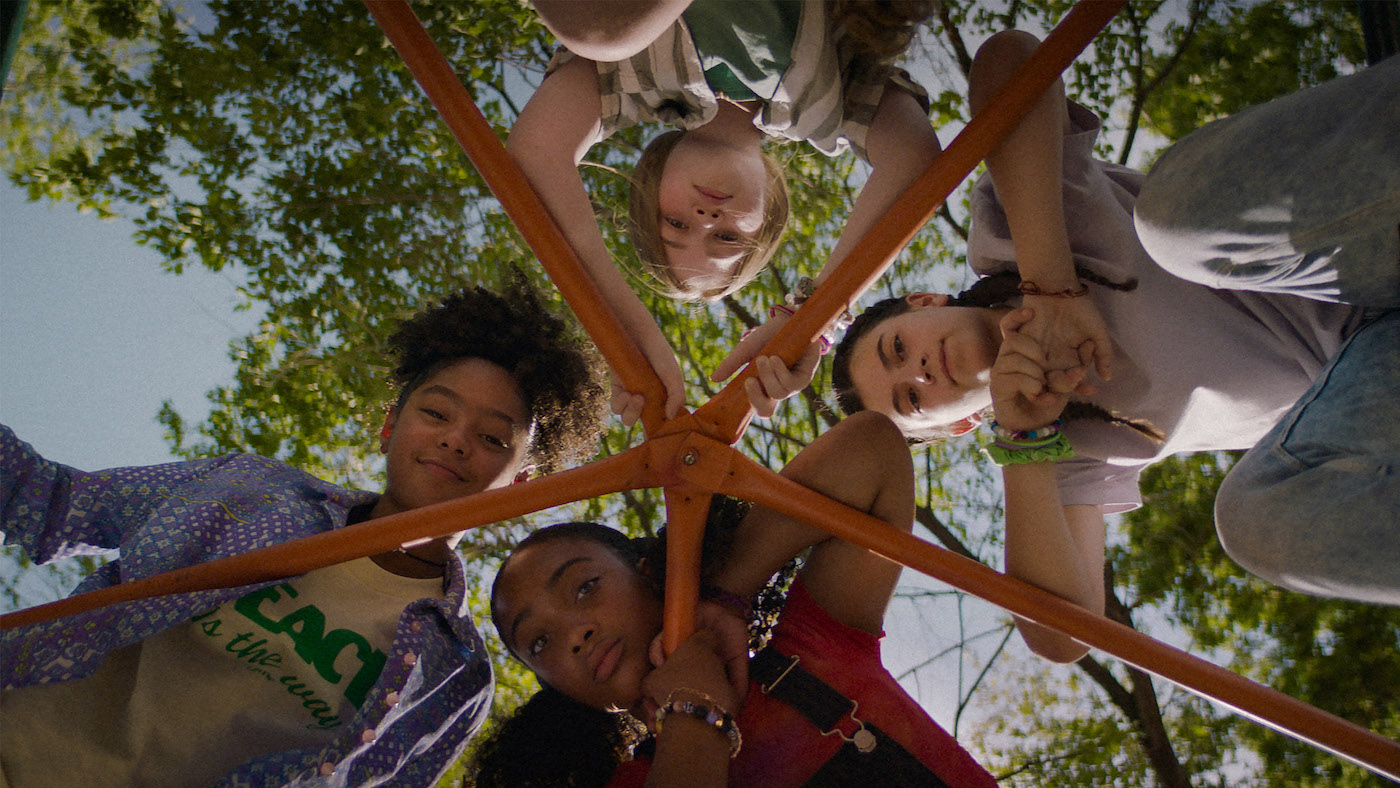
Summering – Co-writer/Director James Ponsoldt brings this story about the last weekend before middle school begins and four girls struggling with the harsh truths of growing up and embarking on a mysterious adventure. Guild DP Greta Zozula’s second feature premiere in Park City this year was challenged by creating two parallel visual aesthetics, “this feeling of going on a journey and how best to capture the essence of summer,” she shares. “Director James Ponsoldt and I chose Cooke Xtal Express lenses for their characteristics and warmth – the warmth immediately providing the look of summer, along with the added magic of [Colorist] Damien Van Der Cruyssen, who created a beautiful LUT.” Zozula goes on to note that the Cookes “are warped, bending spaces in very unnatural ways, and they flare beautifully. It’s a mix of magical realism, horror, and surrealism.” The DP used modern Cooke Anamorphics for the more straightforward scenes. “They don’t have the same unique characteristics (although the 65-millimeter macro is a gorgeous lens) as the Xtals, which are a bit weirder in that beautiful way that can’t be replicated.” Zozula says they achieved the journey through “a ton of controlled camera movement that Steadicam Operator Jed Seus provided with his incredible expertise. We were in the middle of the woods, going through riverbeds and uneven terrain, and Jed enabled us to stay with the girls in an elegant way.” She also credits Local 484 Chief Lighting Technician Matt Hadley, who built and operated his own lighting board. “There were scenes [for which] we had several lighting cues going on at once, and Matt did it all on his own,” Zozula recounts. “Our [Local 99] Key Grip Alex Stein built 200 feet of dolly track in an hour with just two people and seemed to achieve the impossible every day with a small crew. First AC Nic Edwards pulled off some impossible focus pulls and stayed zen through it all. Brenna Empey was the A-Camera 2nd AC but also firsted. She was seamlessly bouncing between the two jobs on a day we couldn’t find additional crew to fill in and kept the department running. I am humbled by their dedication and skills and forever grateful.” Other Guild members on the shoot included B-Camera Operator Michael Black and B-Camera 1st AC Mikkel Richardson.
Indie Episodic Program
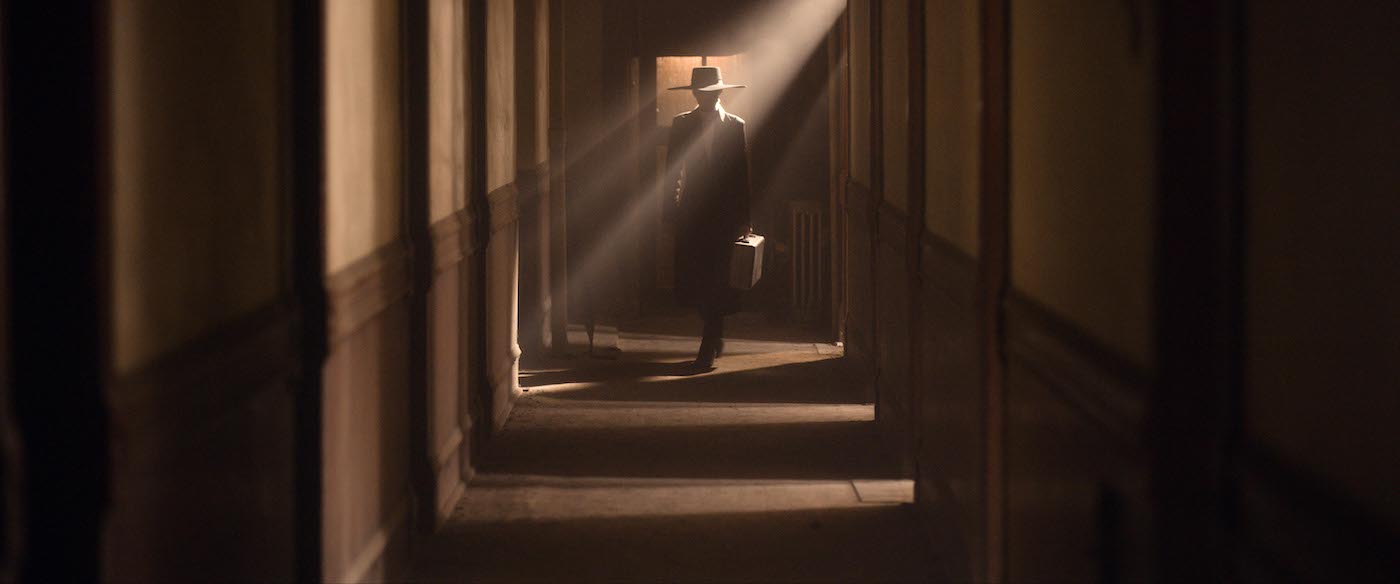
Bring on the Dancing Horses – Guild DP Ryan Spacone shot this new series for Writer/Director Michael Polish. (Sundance is screening just the pilot episode.) Shot in Montana, this western features Kate Bosworth as an assassin out to complete her list of targets and exact her brand of justice. Spacone describes the project as one of the most unique of his career – by a longshot. “Completing principal photography [all 10 episodes] shot on location in Butte, Montana and the surrounding area during the middle of winter, in the height of COVID, was very challenging,” he reflects. “Every department had to approach the show with a ‘less is more’ and ‘quality over quantity’ outlook, which director Michael Polish embodied and led with in his directing style. Every day we’d find a larger-than-life wide shot for our talent to play the scene; and the moment Michael had what he wanted, we’d move on immediately. It was something I’ll never forget: seeing everyone work so closely together as true filmmakers.” Spacone says his original thought was to shoot in 16-by-9 for better streaming options. “But from the moment I arrived in Montana,” he continues, “it was clear that the project needed a larger canvas. I pitched shooting on the Sony VENICE in 6K FF mode (X-OCN), capturing the whole sensor for post/safety but prioritizing a 2.39 aspect ratio. I found the Zeiss Supremes to be the right aesthetic for rich skin tones, while still providing an elegant falloff that helped create a cinematic look for the desired aspect ratio. Although we’d be shooting mostly during winter, we were scouting in the fall, and Michael wanted to keep those warmer fall tones a part of the project’s color and look.” Shortly before principal photography started, Spacone did a full camera, lighting, and makeup test, with the goal being to have all the department heads meet and start collaborating as a team. “Before the test,” he adds, “I had my colorist, Aleks Verholak, create four different LUT’s that had a warm but deep tonality that our DIT, John Vallon, and I could tweak and dial in while setting up the lighting for each setup. We ended up dialing-in two that became my main shooting LUT’s for the show.”
Shooting in a 2.39 ratio without true anamorphic lenses, Spacone went through a variety of filters, ultimately using the HBM line as the main look for the show. “My longtime friend, Local Gaffer 476 Tom Burnett, helped me create three different lighting scenarios for exterior and interior daylight and interior night to best capture Kate Bosworth as our ‘Angel of Death,’” Spacone explains. “And for every location or scene, we leaned into using shafts of hard light in the backgrounds to create depth and mood. And then for anything touching actors’ faces, we’d prioritize keeping it as angelic as possible, unless the character or moment was a dark or villain-like moment. The risk/reward factor was a daily trial because you’re shooting on location in the elements – some days feel like it nearly kills you with the cold, wind, and snow, but all the while the entire crew looks where you’re pointing the camera and agrees that you must push on.” Spacone says the Guild shot in every possible condition – from the mountains with horses to 120-year-old generator mining shafts and 100-year-old Victorian mansions. “Most of the locations were so old they didn’t have any power or elevators,” he concludes, “and the crew would have to figure out ways to make the basics of filmmaking happen without having any of the structural foundations you usually have in most production cities. My key grip, Paul Goodstein (Local 80), had to build multiple cart ramps for various locations, including one that stretched three separate flights of stairs for the entire company of carts. This was the type of project that proves ‘you are only as good as your crew,’ and this group of filmmakers was some of the best I’ll ever have the pleasure to work with.”
Guild DP Francisco Bulgarelli, who shot roughly half of the pilot episode being screened at Sundance, was tasked with shooting L.A. for Montana and ensuring his footage seamlessly cut with Spacone’s work on location. Bulgarelli notes that “given that Montana and Los Angeles are so different, geographically speaking, Michael [Polish] opted to use large structures, like for instance a gym that played as a bus station or a big, old craftsman house that played as one of the main locations. It helped to maintain the illusion of being somewhere in Montana and to accentuate the overall state of mind of the main character, which plays in flashback for a big part of the second half of the pilot.” Bulgarelli says that to help preserve “the pervasive sense of loneliness throughout the story,” he incorporated shallow depth of field with foreground elements. “Ryan’s choice of the VENICE, with the Zeiss Supremes and light filtration, was a beautiful combination,” Bulgarelli adds. “It allows for a certain degree of stylization and beautiful bokeh; a creamy, rich look without being overly sharp.” Joining Spacone, Rivera, and Vallon in Montana were Local 600 members Joe McNairy (A-Camera 1st AC) and Matty Von Arx (B-Camera 1st AC). The Local 476 lighting team joining Burnett in Montana was Best Boy Brad Smith and Lamp Operator Gavin Brown. Bulgarelli’s Local 600 team in L.A. was made up of Operator Frank Barrera; 1st AC’s Joe Marine, Cary Gallagher, and Cliff Thenard; 2nd AC Natalie Fong; and DIT’s John Vallon and Melissa Vilardo; along with Local 728 Chief Lighting Technician Ryan Meyer and Local 80 Key Grip Joseph Dianda.
Narrative Shorts
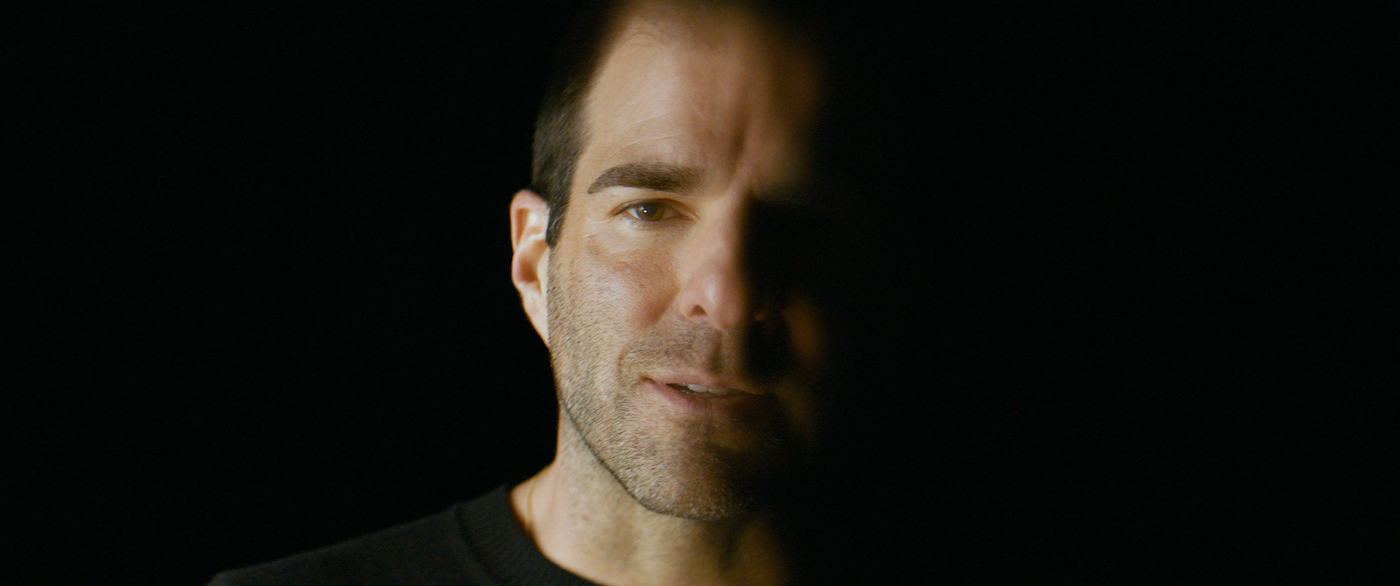

If I Go Will They Miss Me? – Local 600 DP Michael Cambio Fernandez lensed this short for writer/director Walter Thompson Hernandez about Lil’ Ant (Anthony Harris Jr.), a young man obsessed with Pegasus, the Greek mythological character, since first learning about him at school in Watts, CA. Lil’ Ant begins to notice imaginary airplane people around his home and yearns to fly with them.
Cinematography-Related Events at Sundance 2022
ZEISS Film Festival Week
Cinematographer’s Roundtable
Friday, January 21st at 12pm PST
We’re kicking off our 2022 virtual ZEISS Film Festival Week this Friday, January 21st with an in-depth discussion about films accepted into the festival. Get to know the cinematographers whose projects are screening at the fest during this exciting panel discussion. We’ll spotlight their official festival selections – talking workflow and creative choices – followed by a live audience Q&A.
Cinematographers and their festival films:
Melinda James, “Work”
Charlotte Hornsby, “Master”
Alex Disenhof, ASC, “Alice”
Andrew Wheeler, “God’s Country”
Jordan Parrott, “Chaperone”
Link to Register: https://zeiss.zoom.us/webinar/register/WN_ilXLXNxmRSKxMGp9scwj3w
Matthew Chuang, ACS
Tuesday, January 25th at 12pm PST
The featured guest of ZEISS Film Festival Week is innovative artist, Matthew Chuang, ACS! An accredited member of the Australian Cinematography Society, Chuang has been working behind the camera for more than a decade and is dedicated to bringing his creative eye and adaptable processes to each project he accepts. Born in Nantou, Taiwan, Chuang is an Australian filmmaker, who is now based in Los Angeles.
Chuang is known for his exquisitely crafted feature films, music videos and award-winning commercials. We’ll discuss cinematography on Causeway Films (The Babadook, The Nightingale) and Focus Features’ upcoming supernatural horror “You Won’t Be Alone”, written and directed by Goran Stolevski and starring Noomi Rapace (Lamb, The Girl With the Dragon Tattoo, Prometheus) and Alice Englert (Beautiful Creatures).
Join us for this virtual event as we discuss Matthew’s new film festival selection to equipment and creative choices. We’ll also get Matthew’s take on his collaboration with director Allen Hughes on a five-part documentary series with FX Network and Disney called “Outlaw: The Saga of Afeni and Tupac Shakur”, which is set to release this spring.
Link to Register: https://zeiss.zoom.us/webinar/register/WN_OWBRShbuQcCIdsfVJpC9Qw
